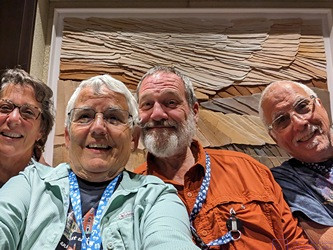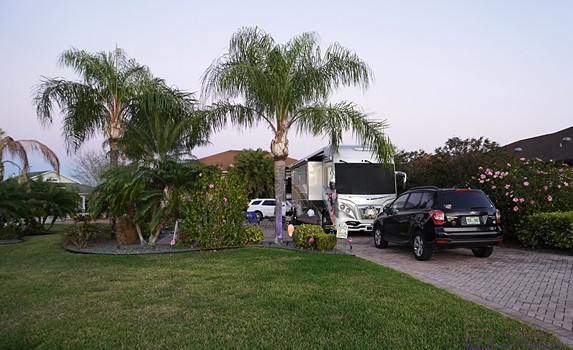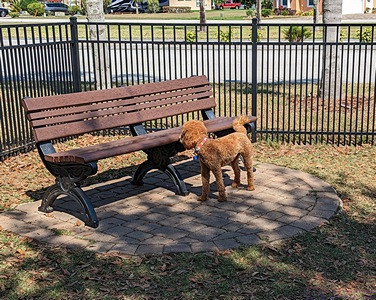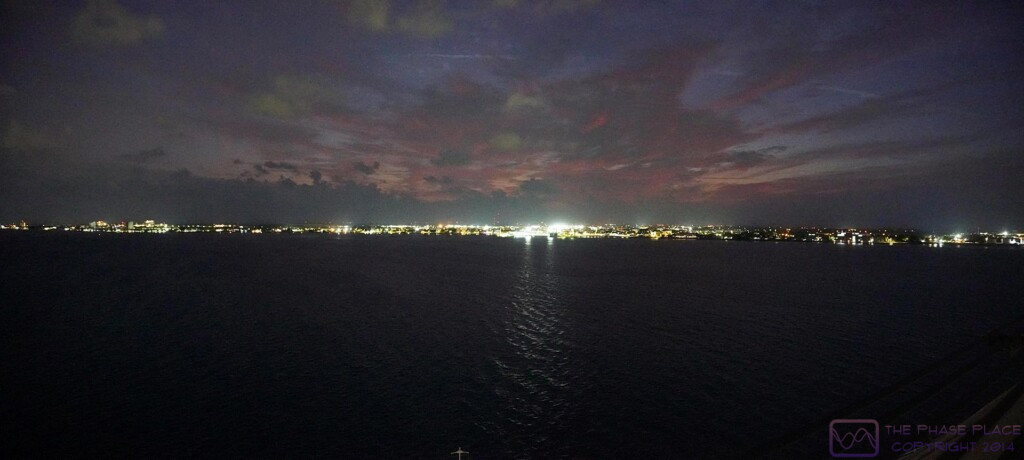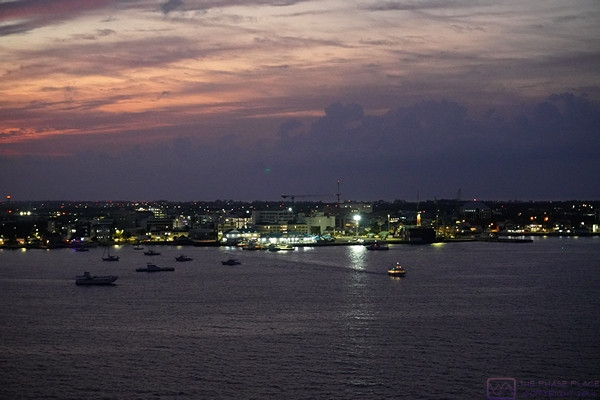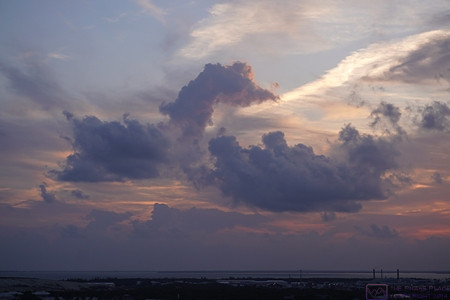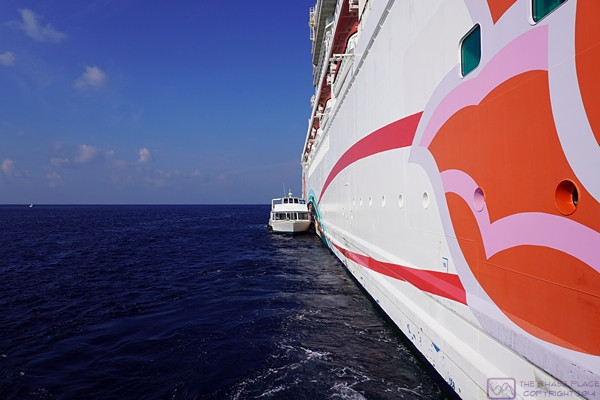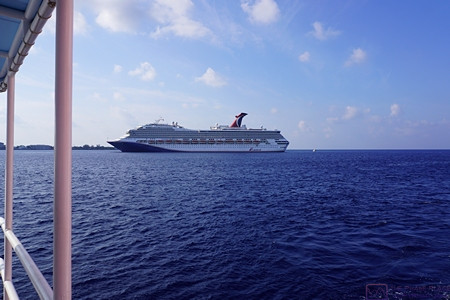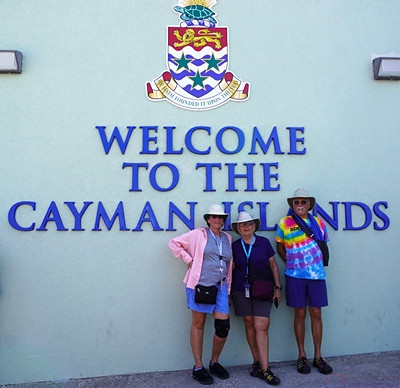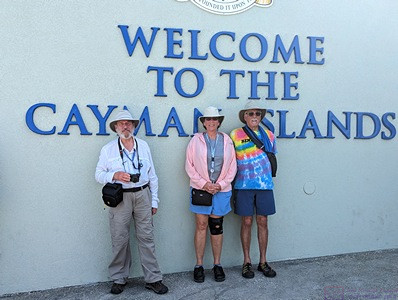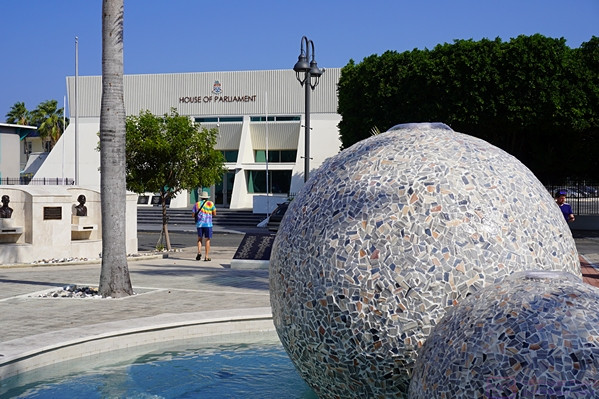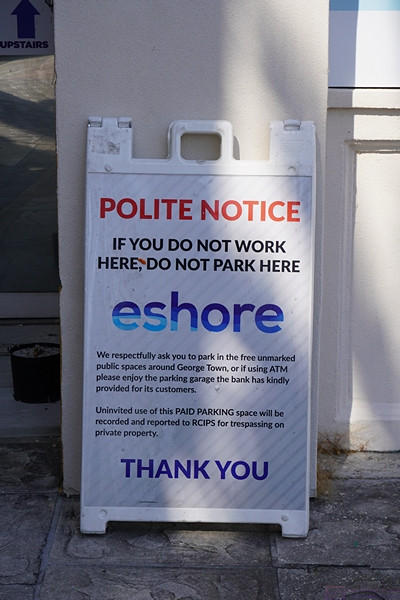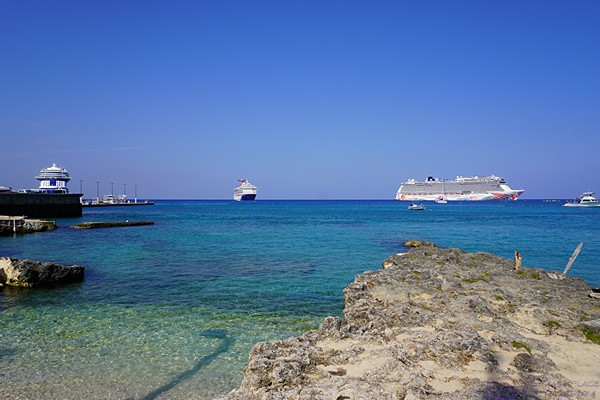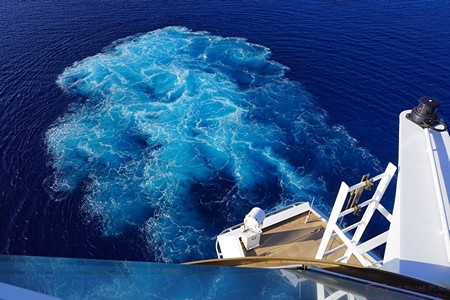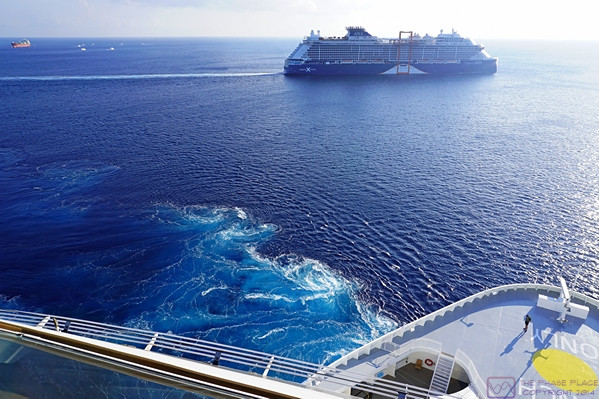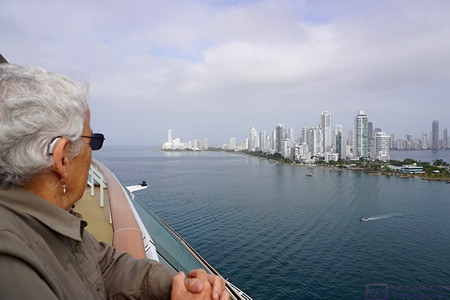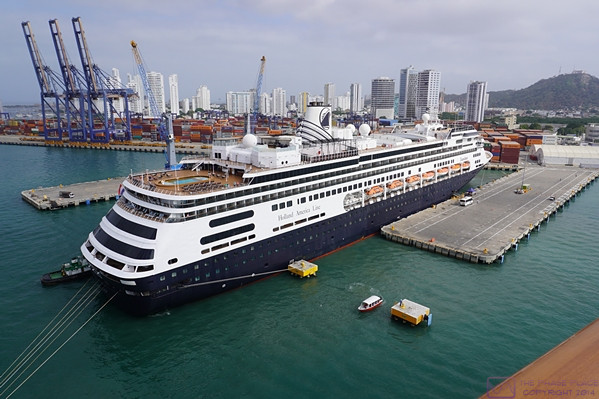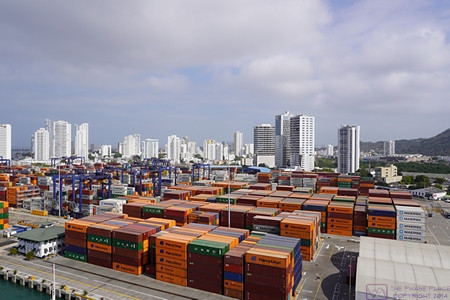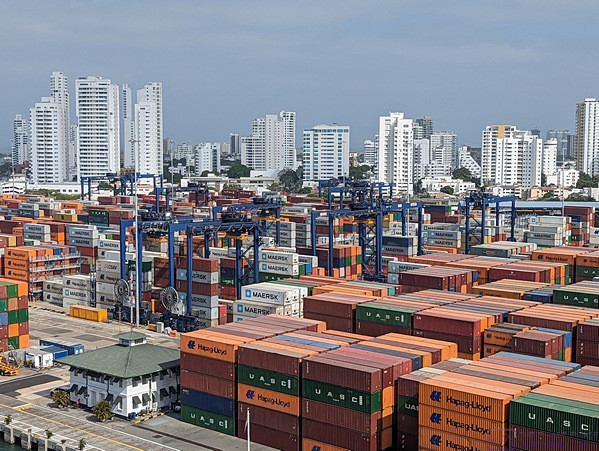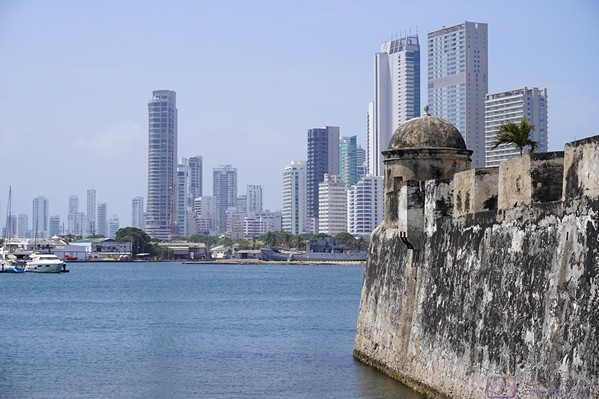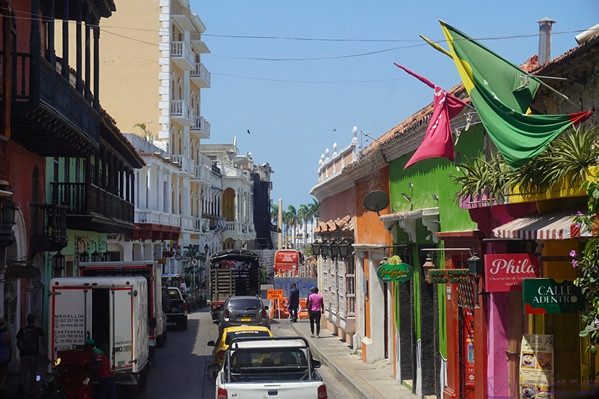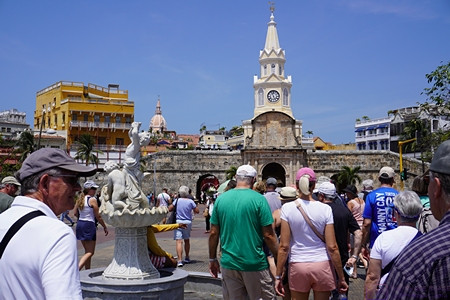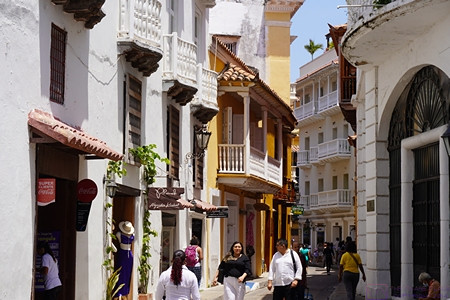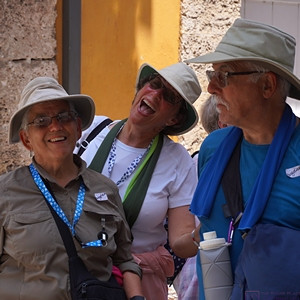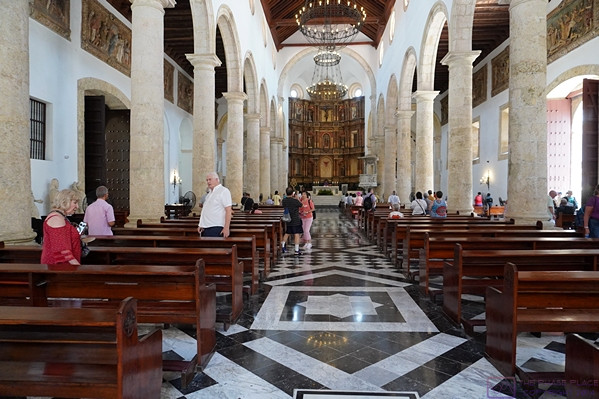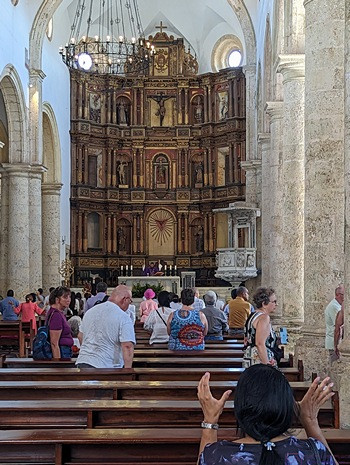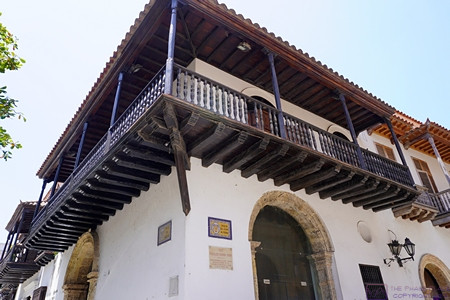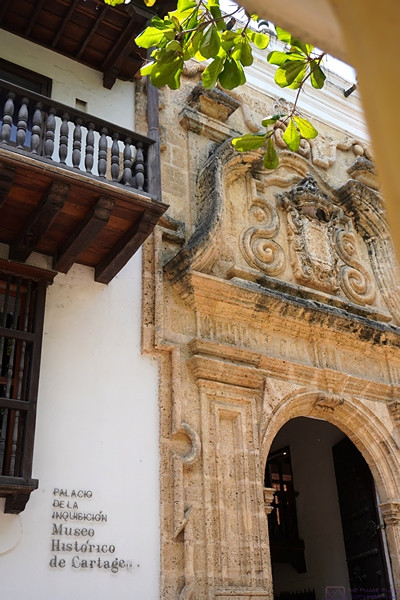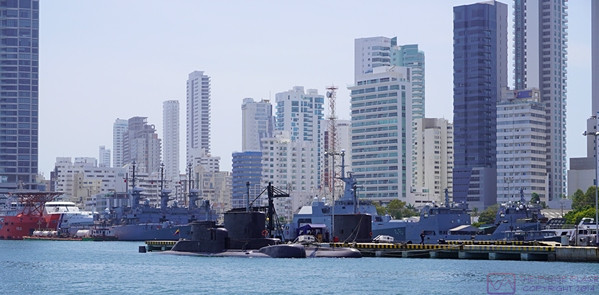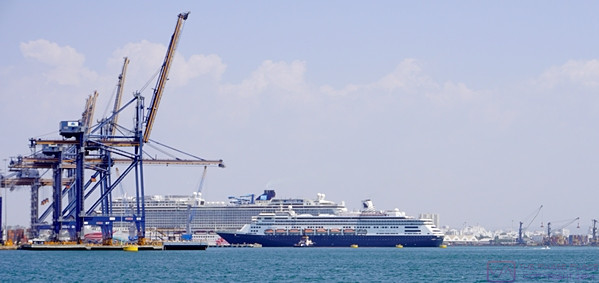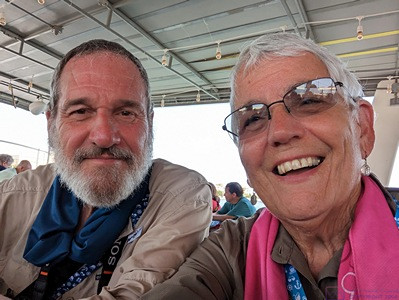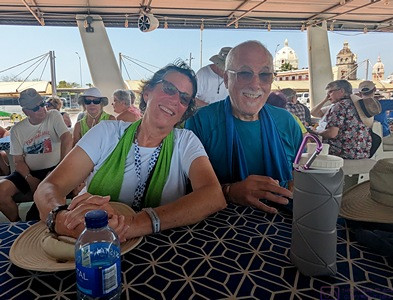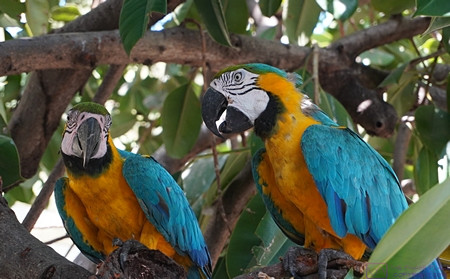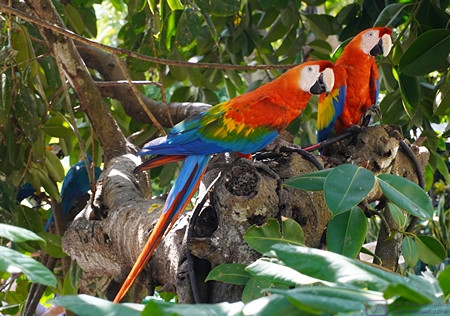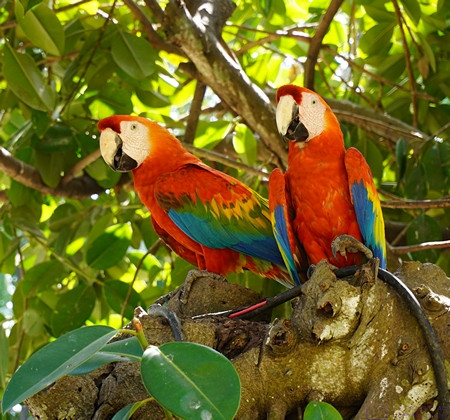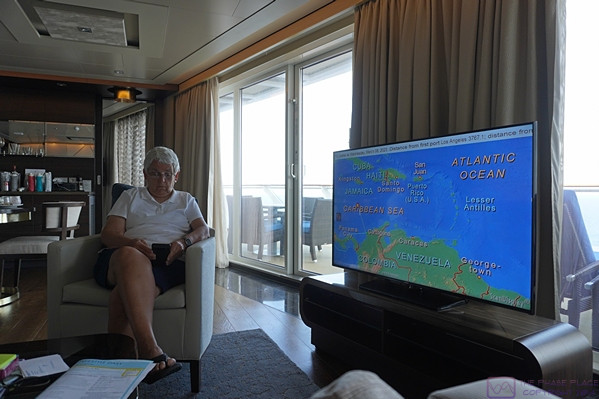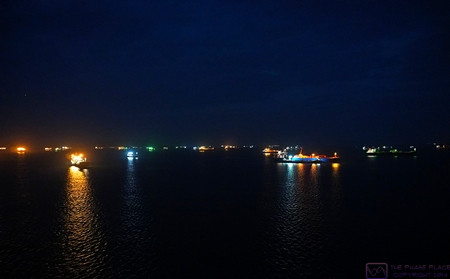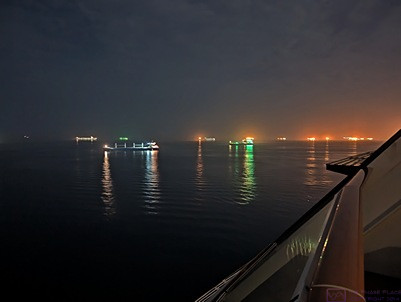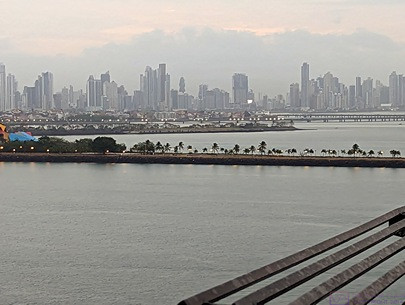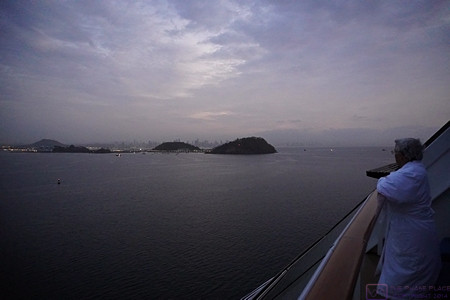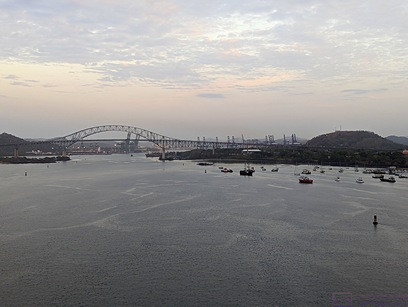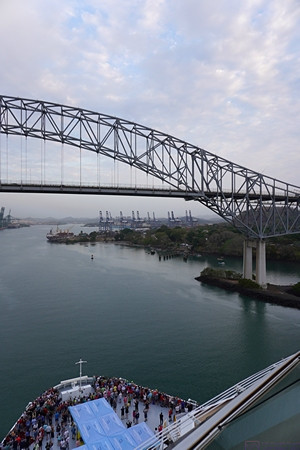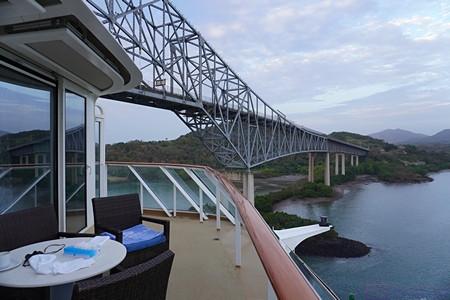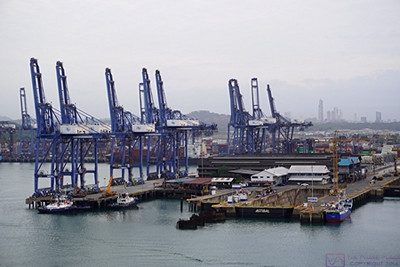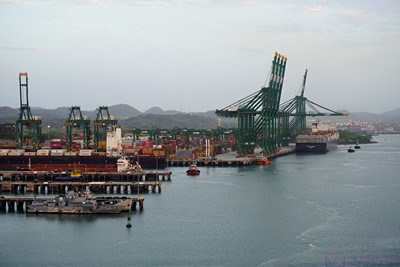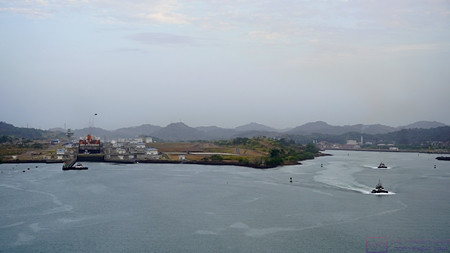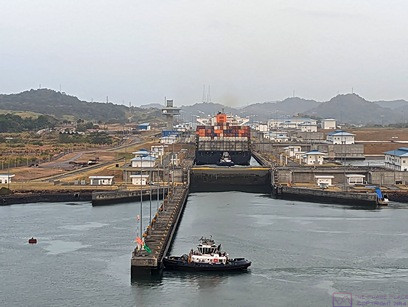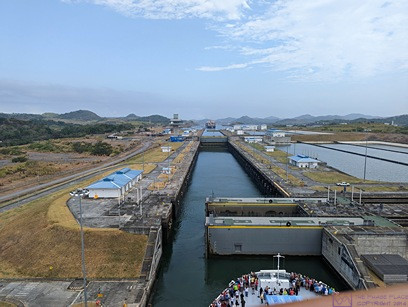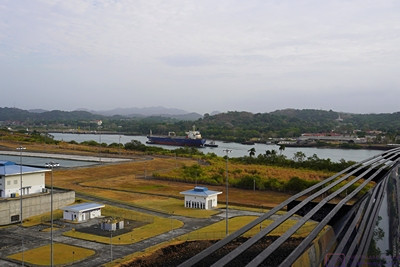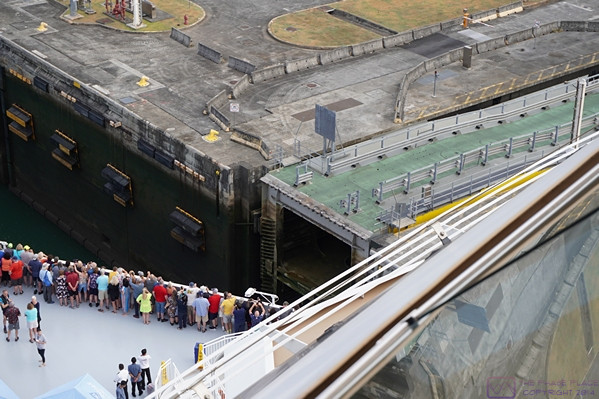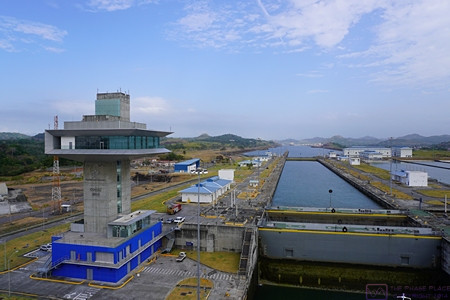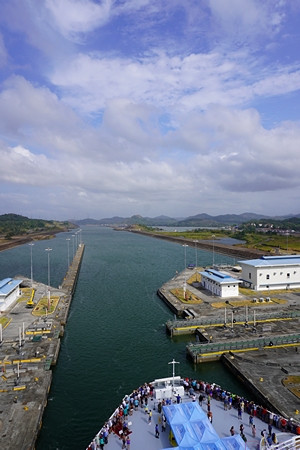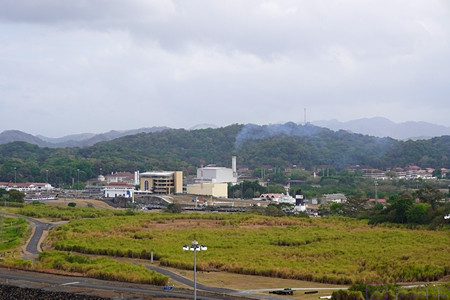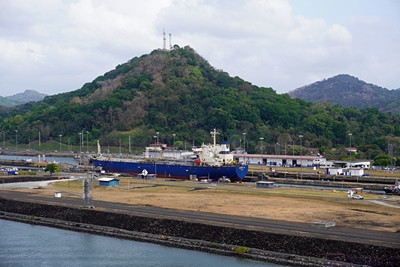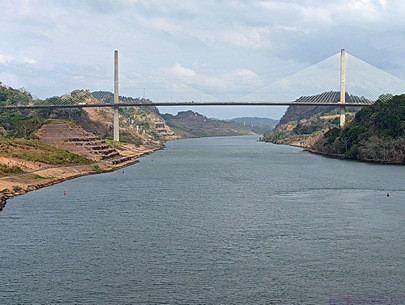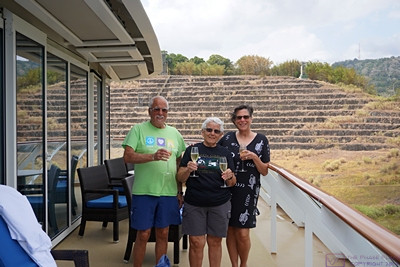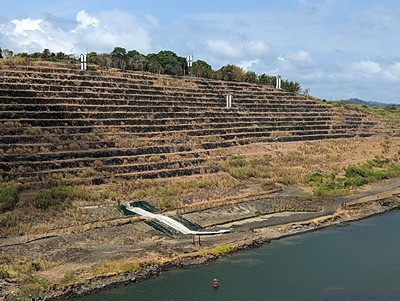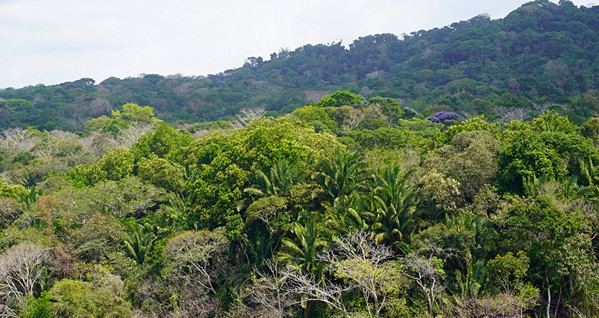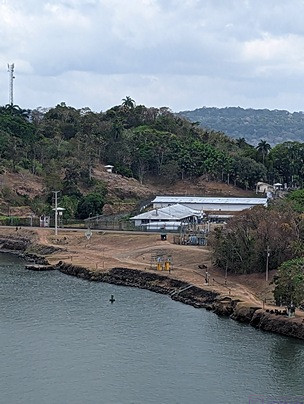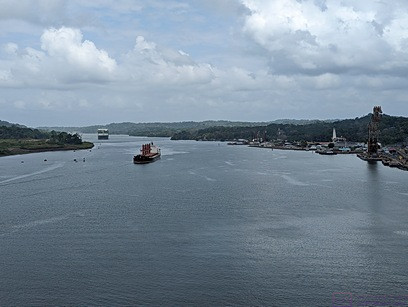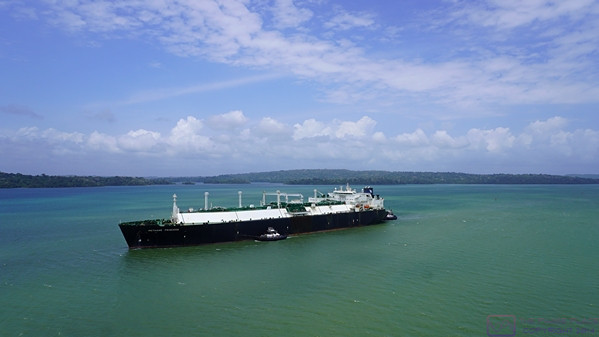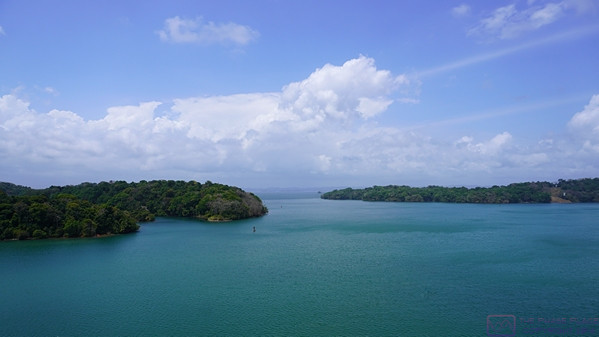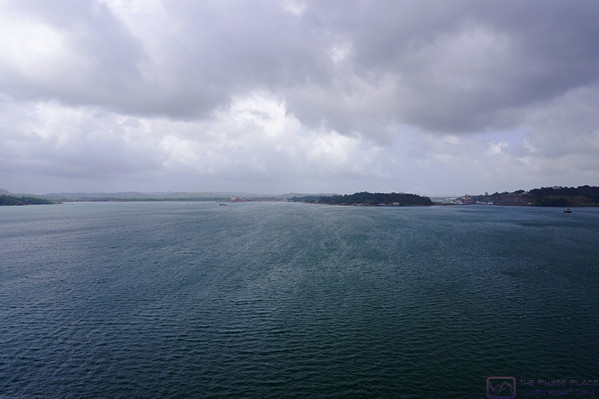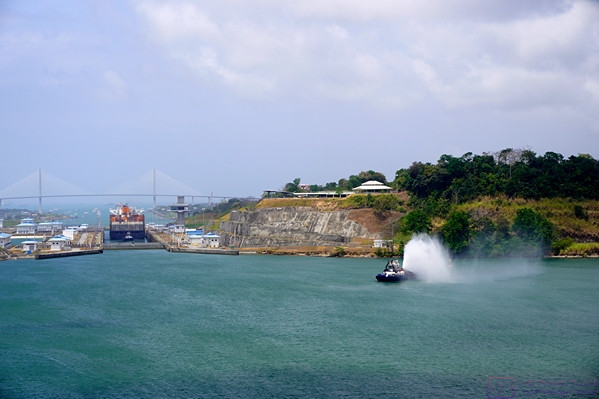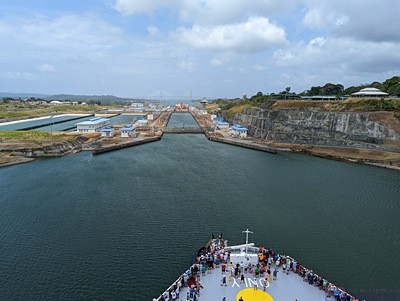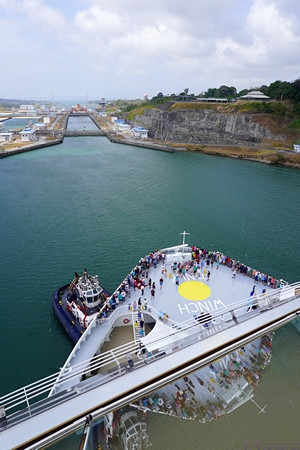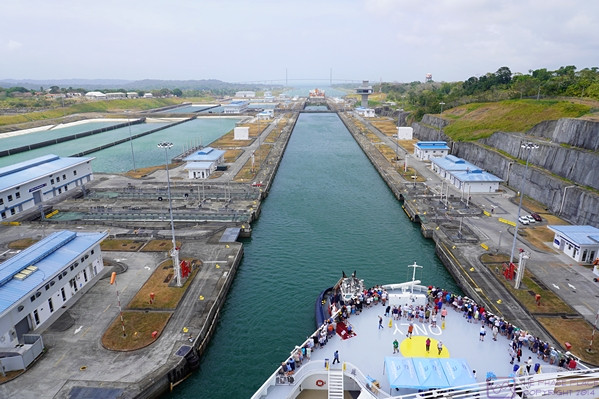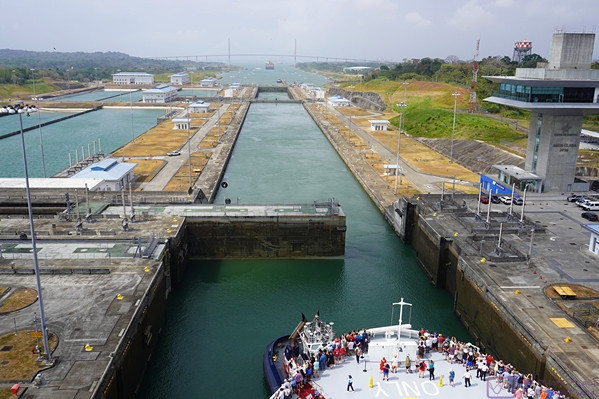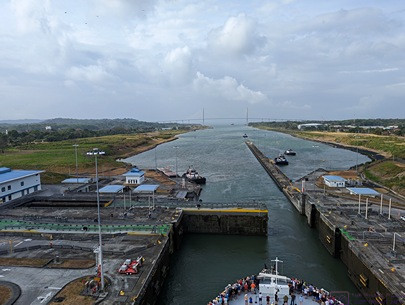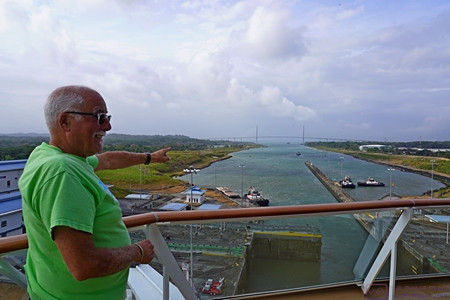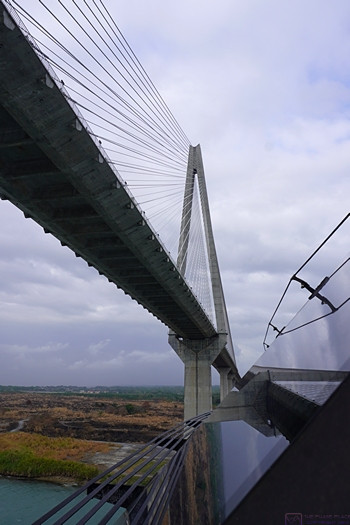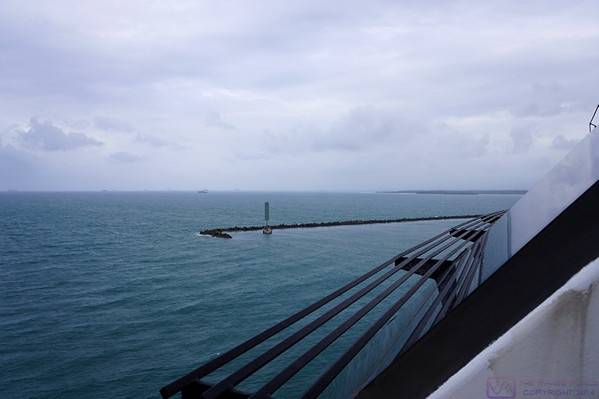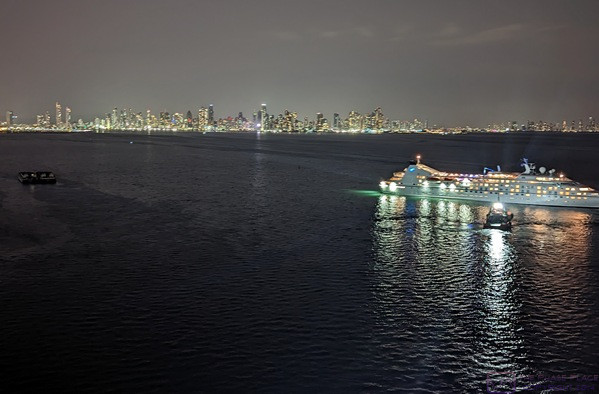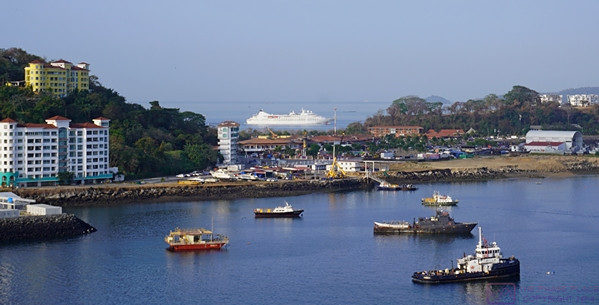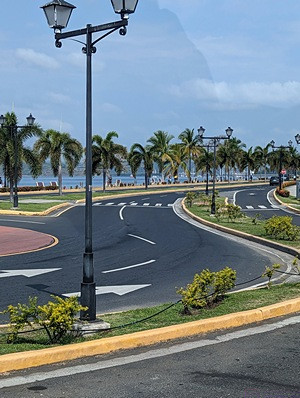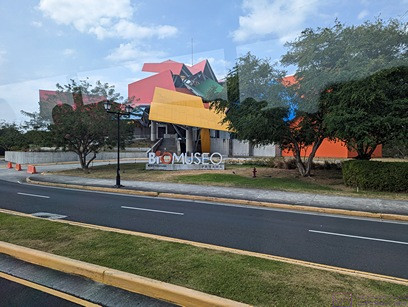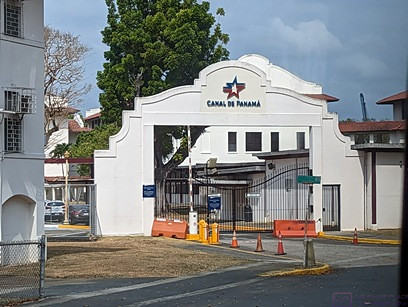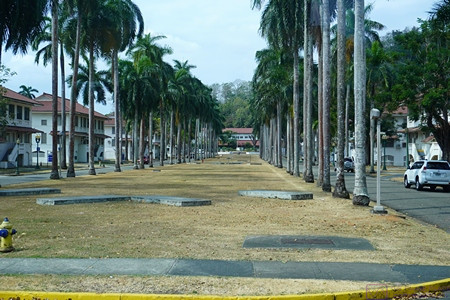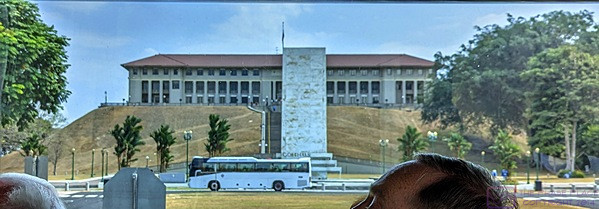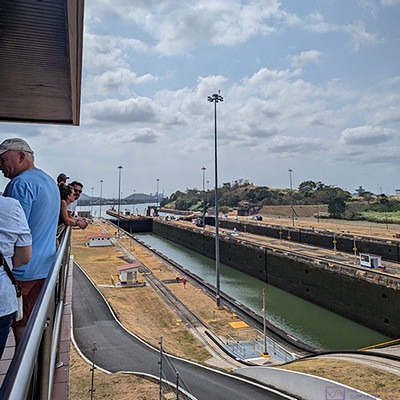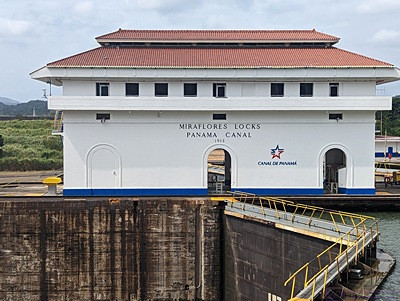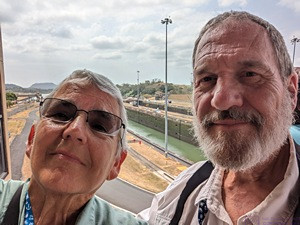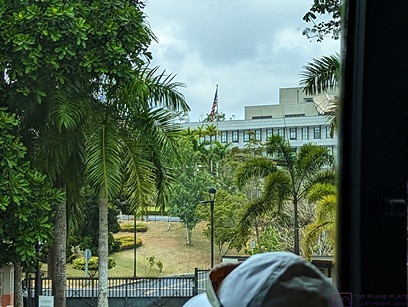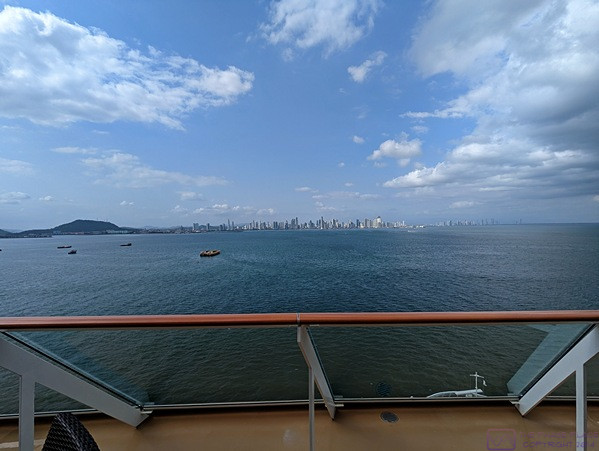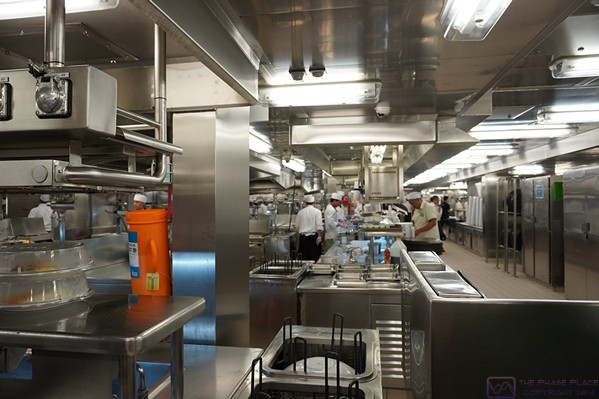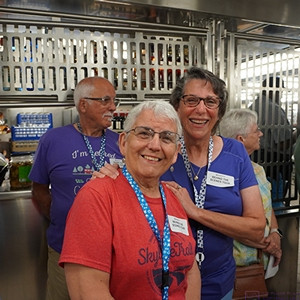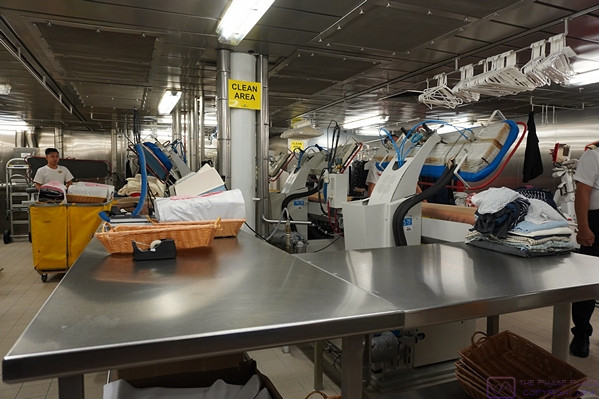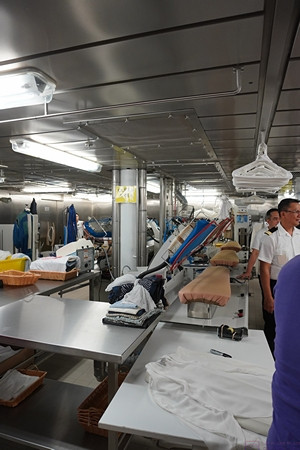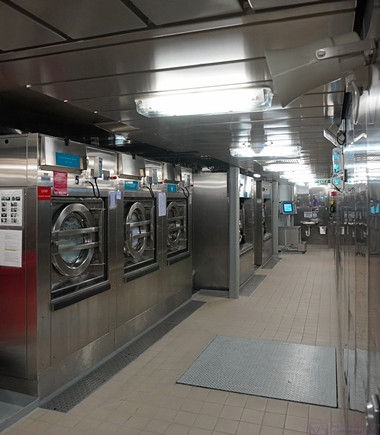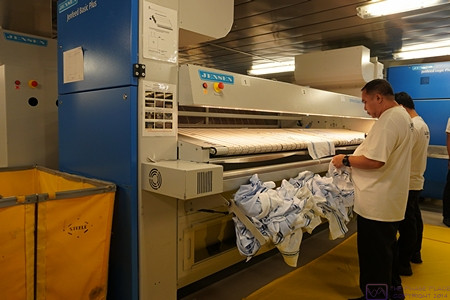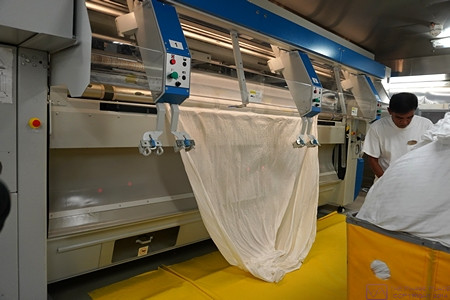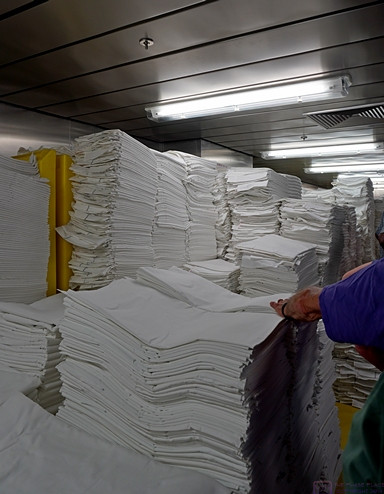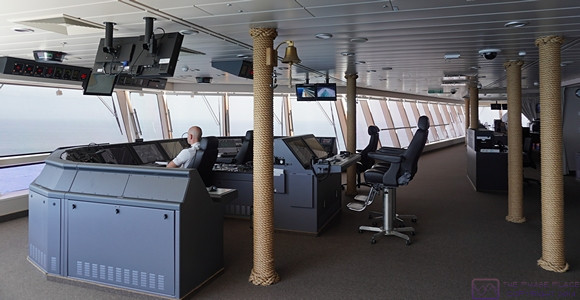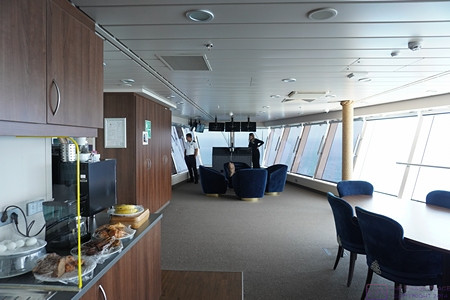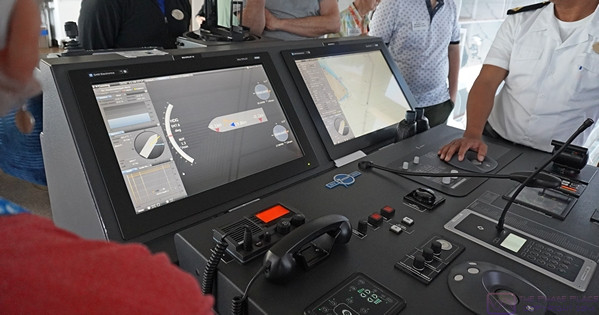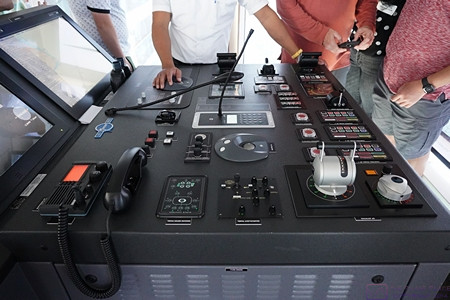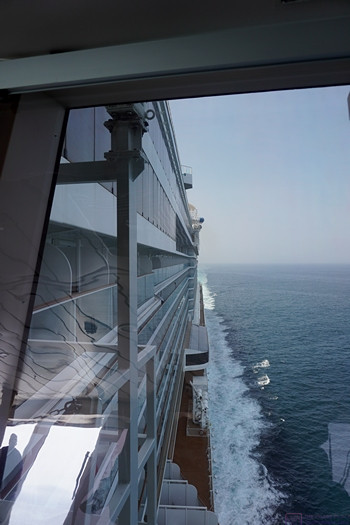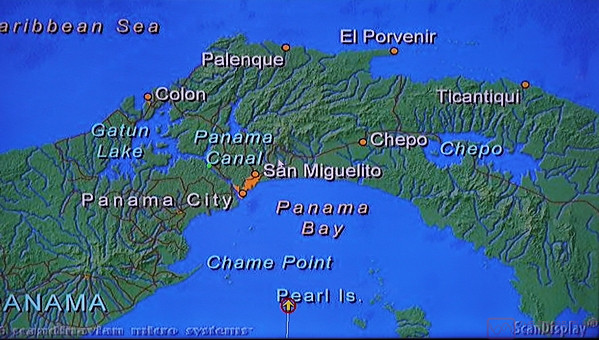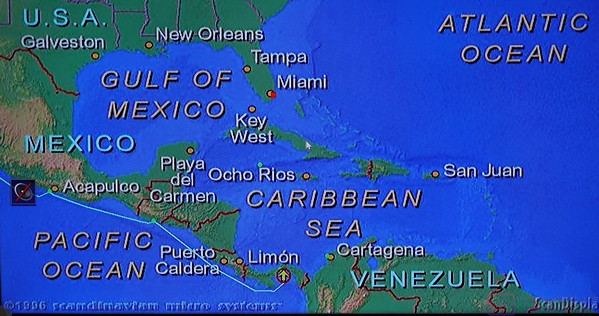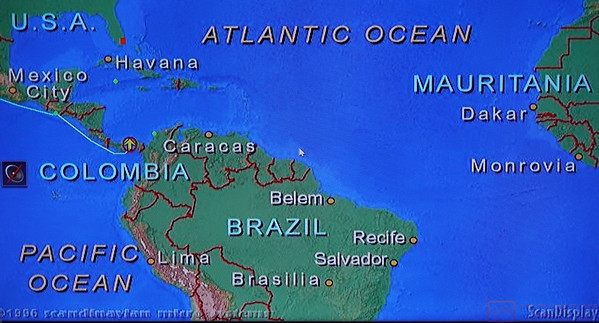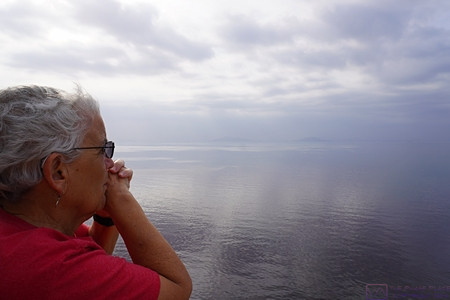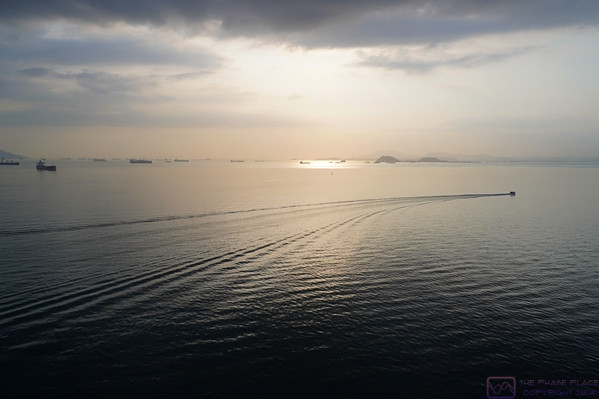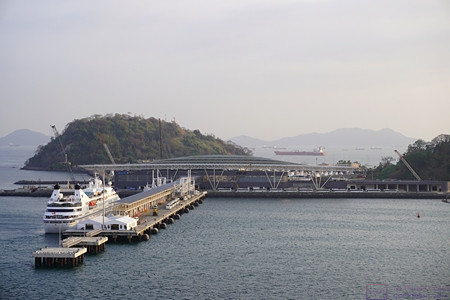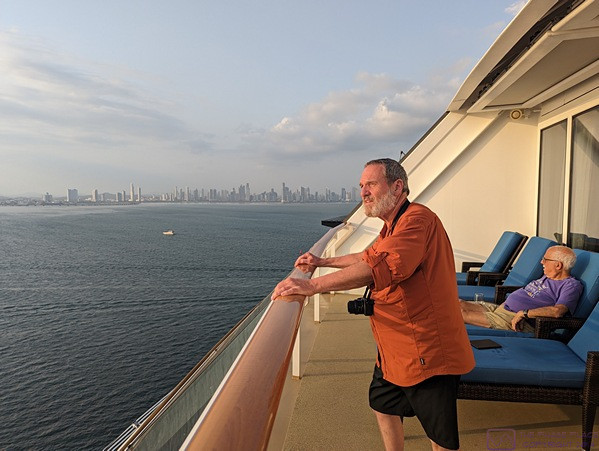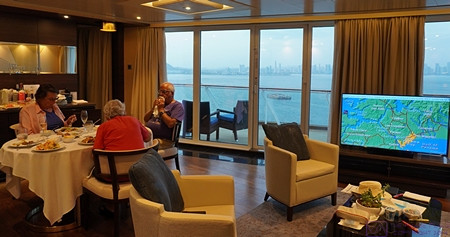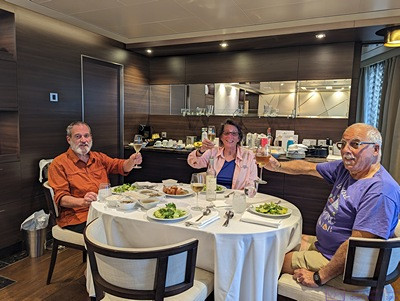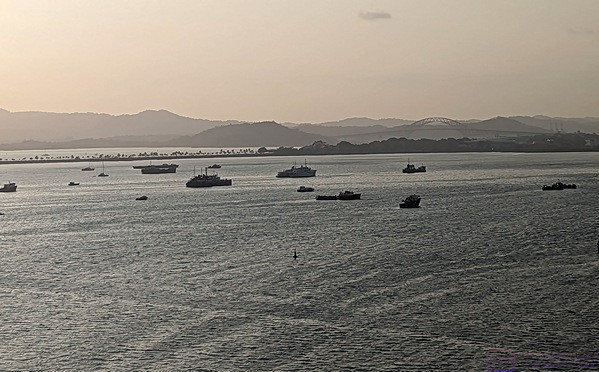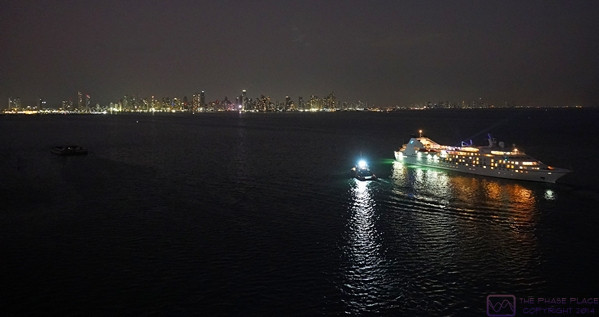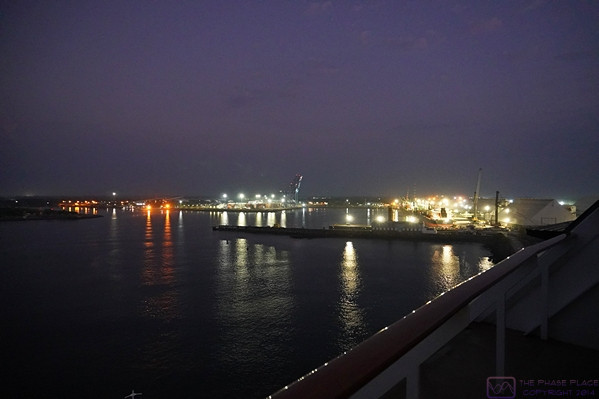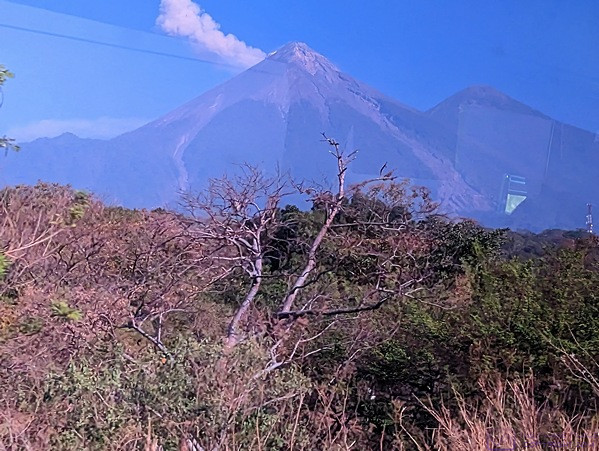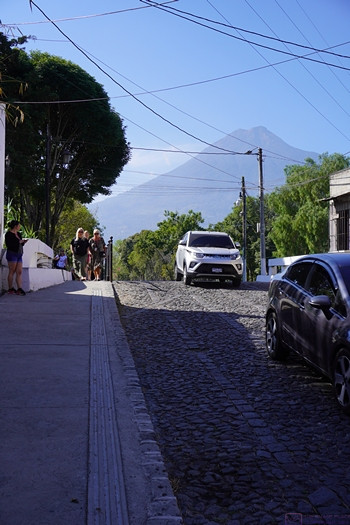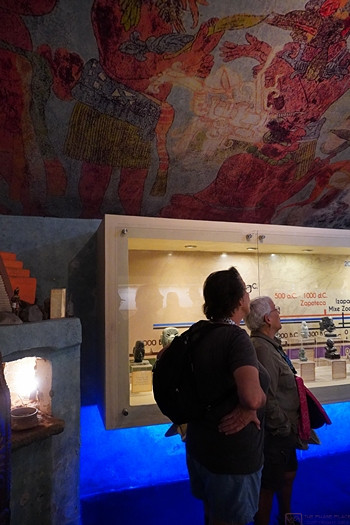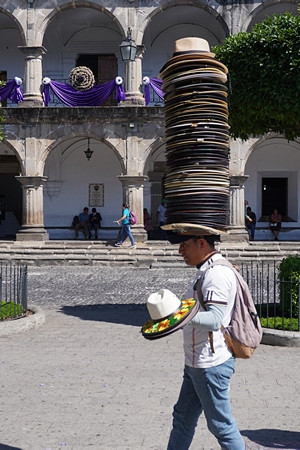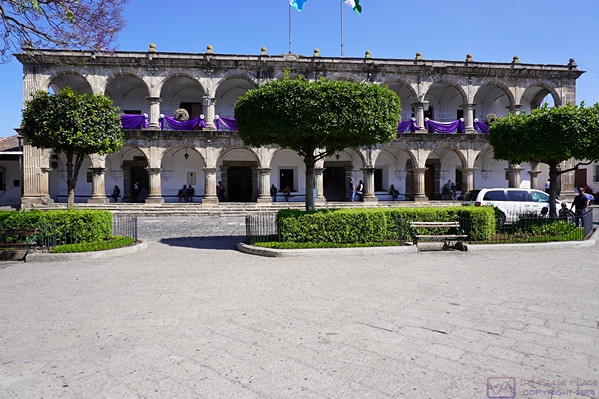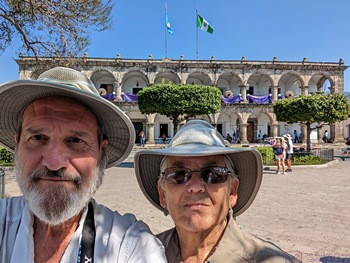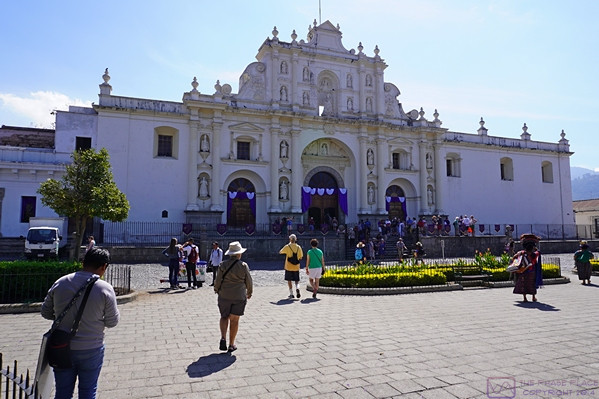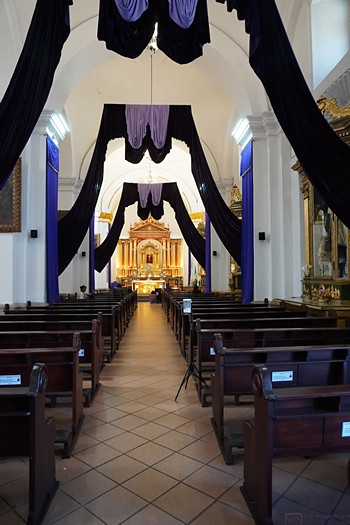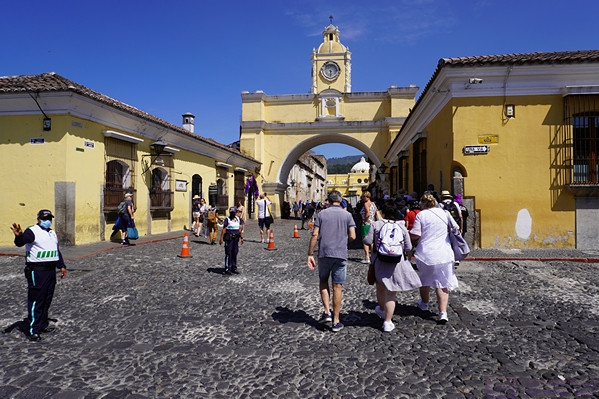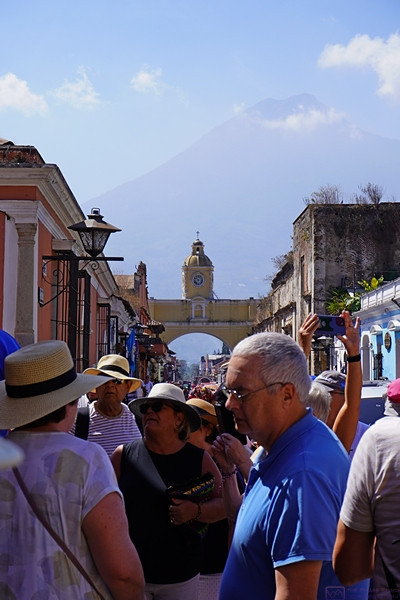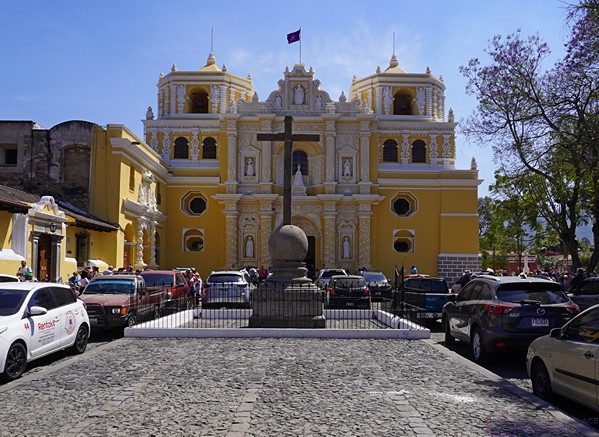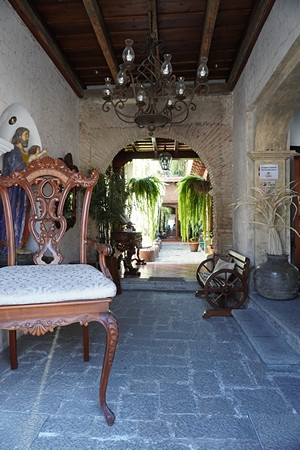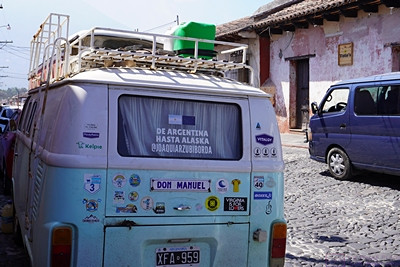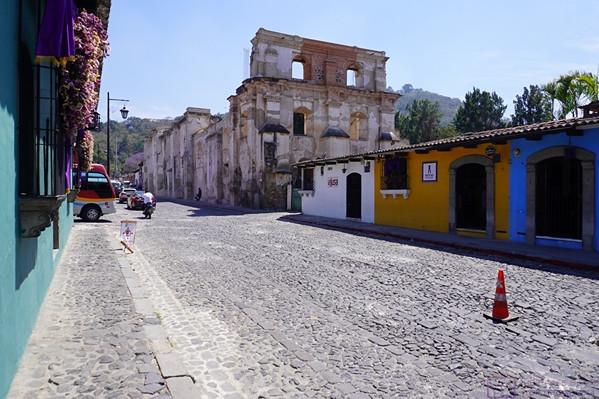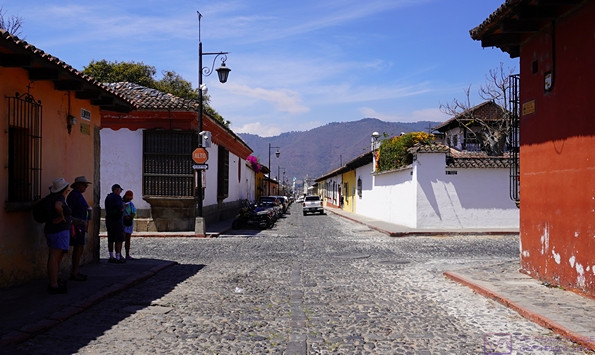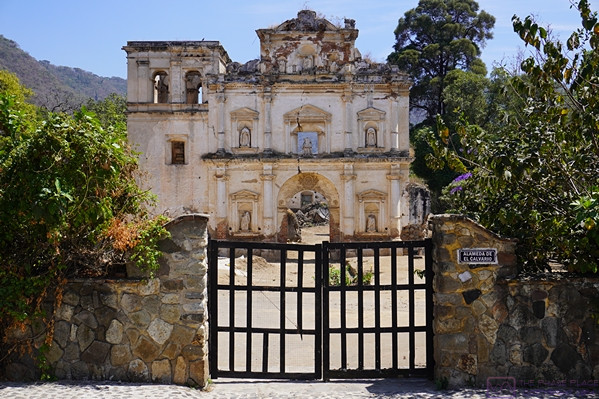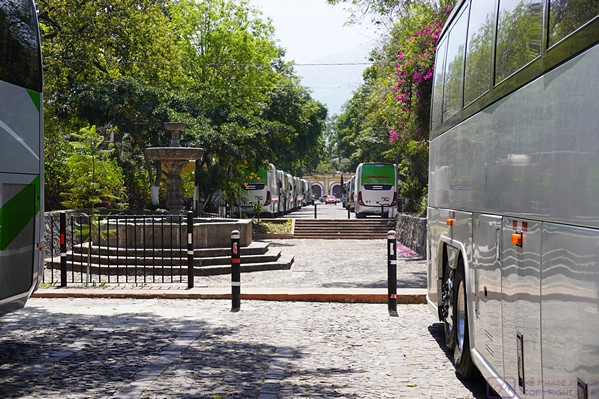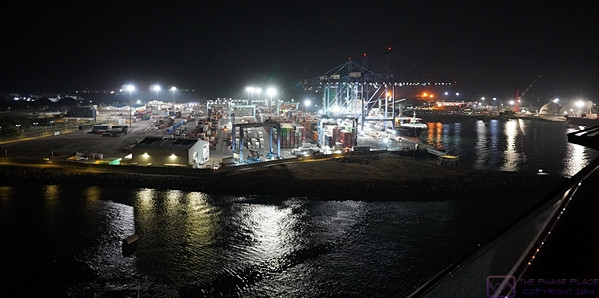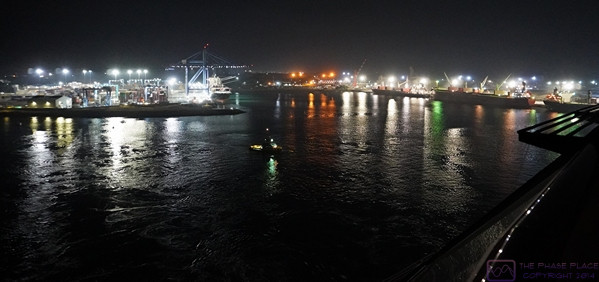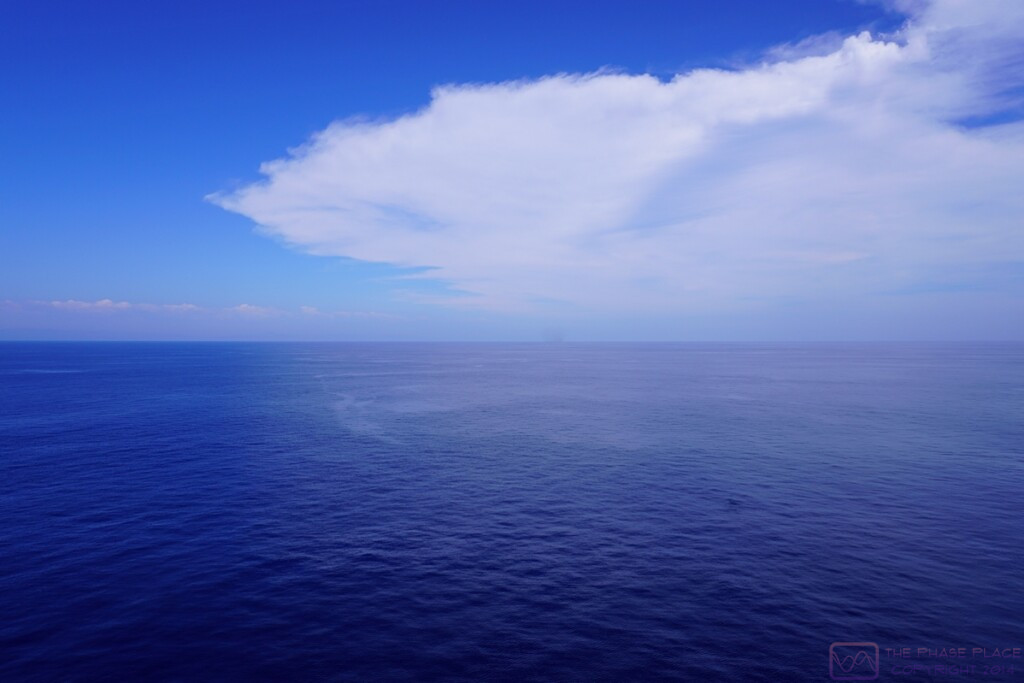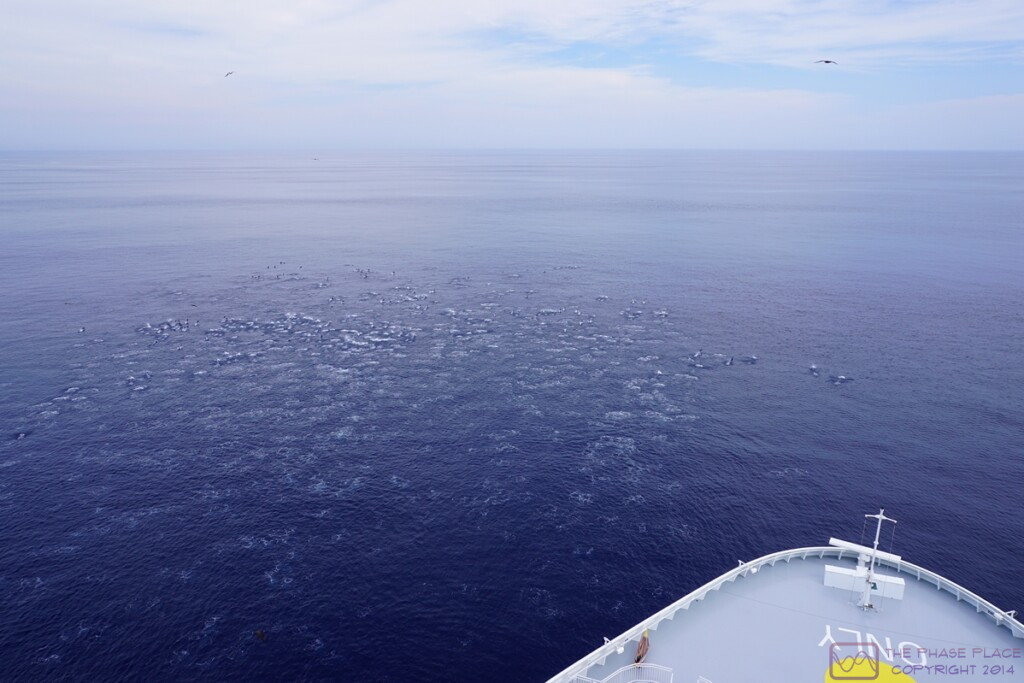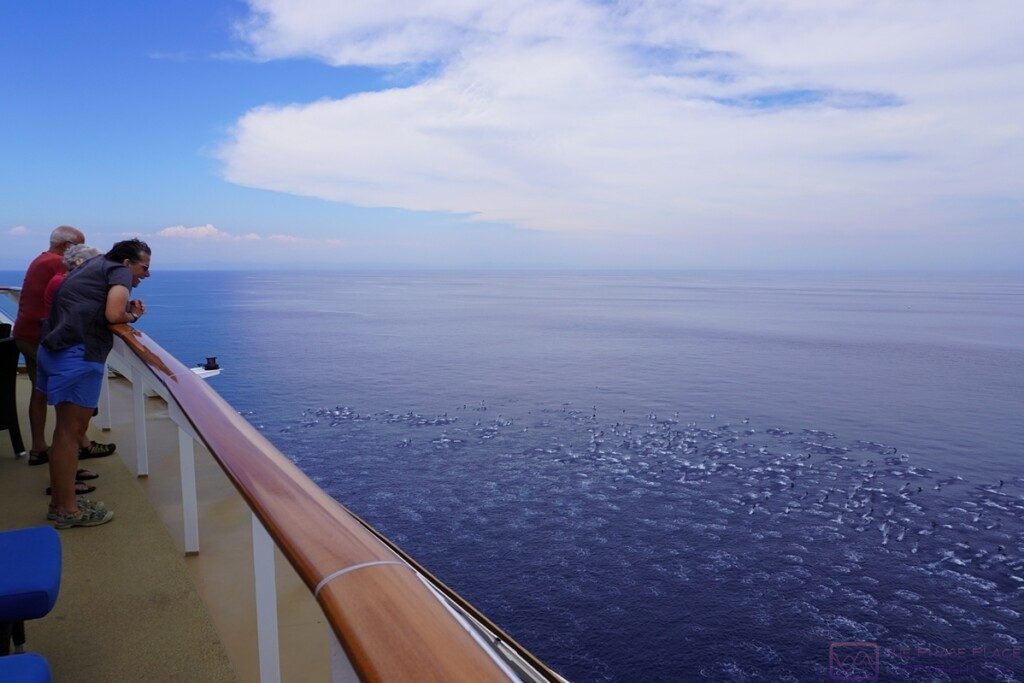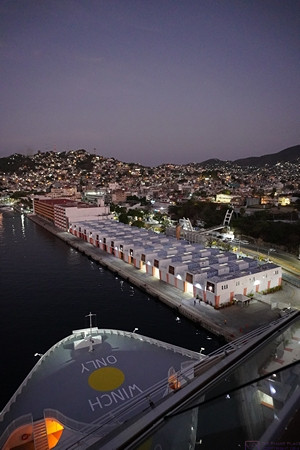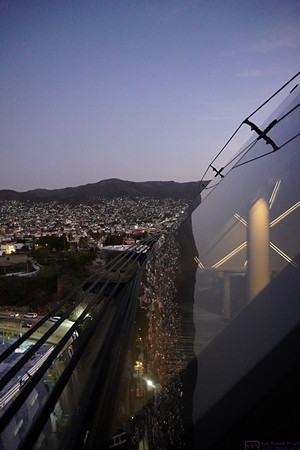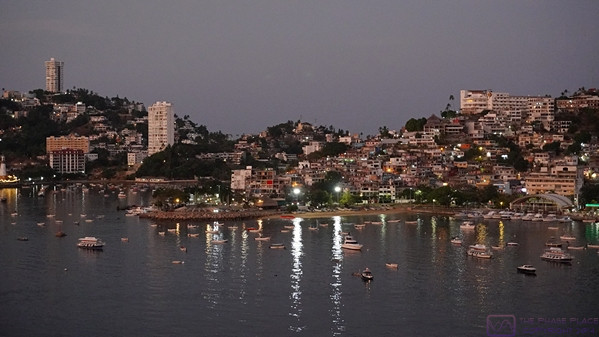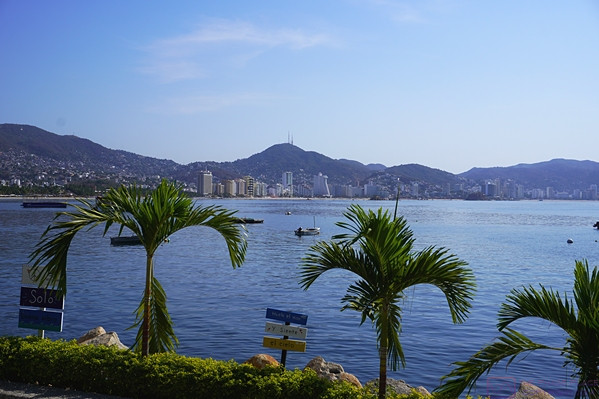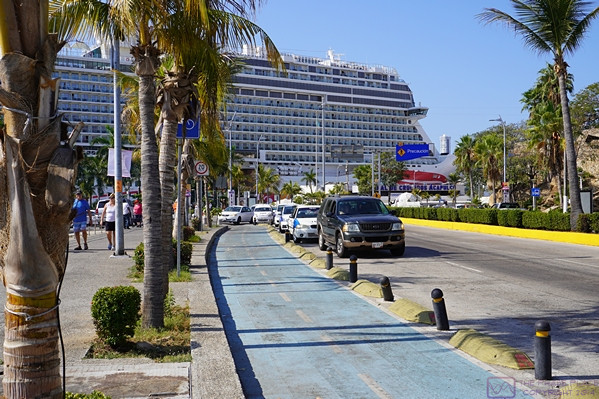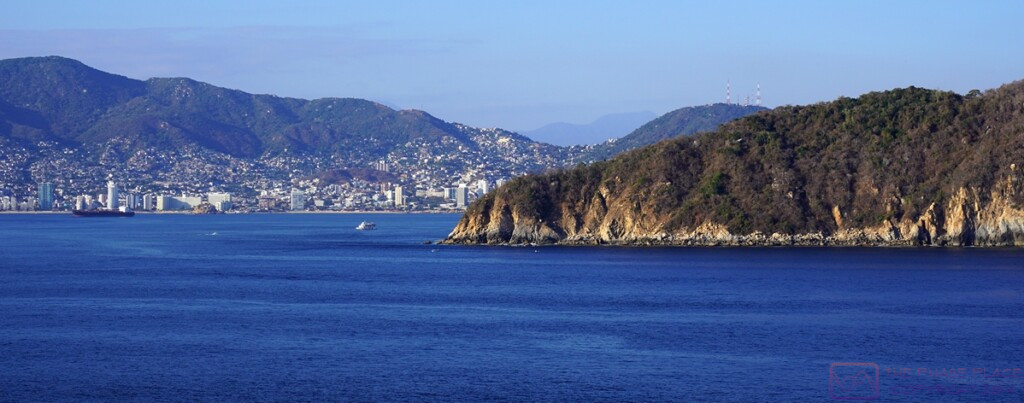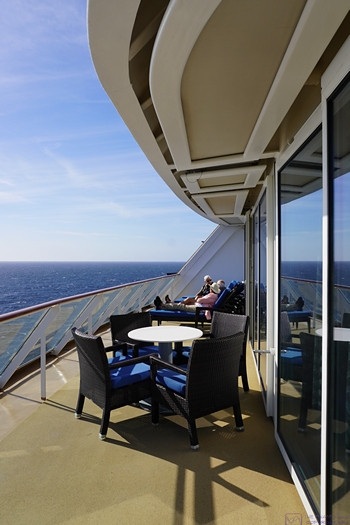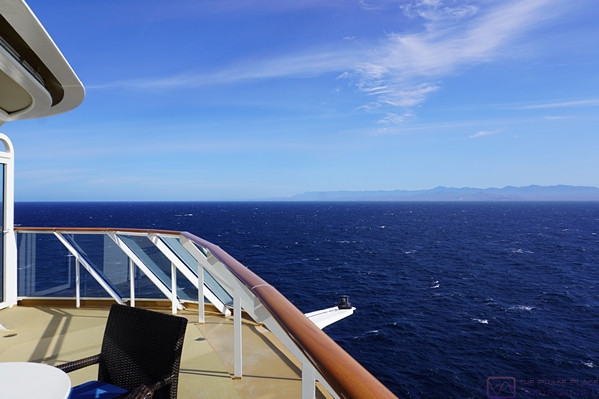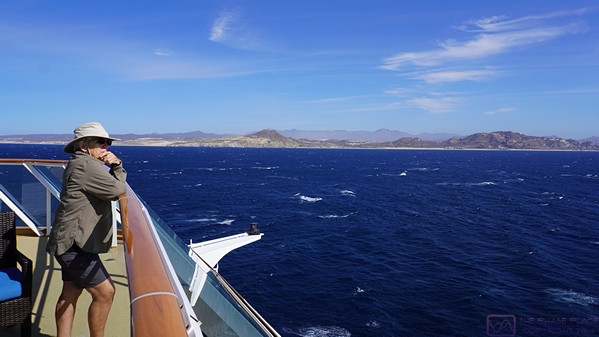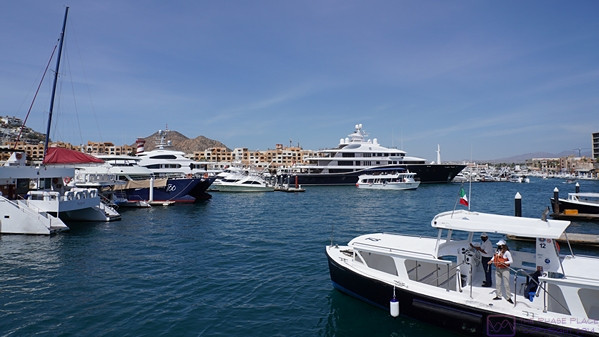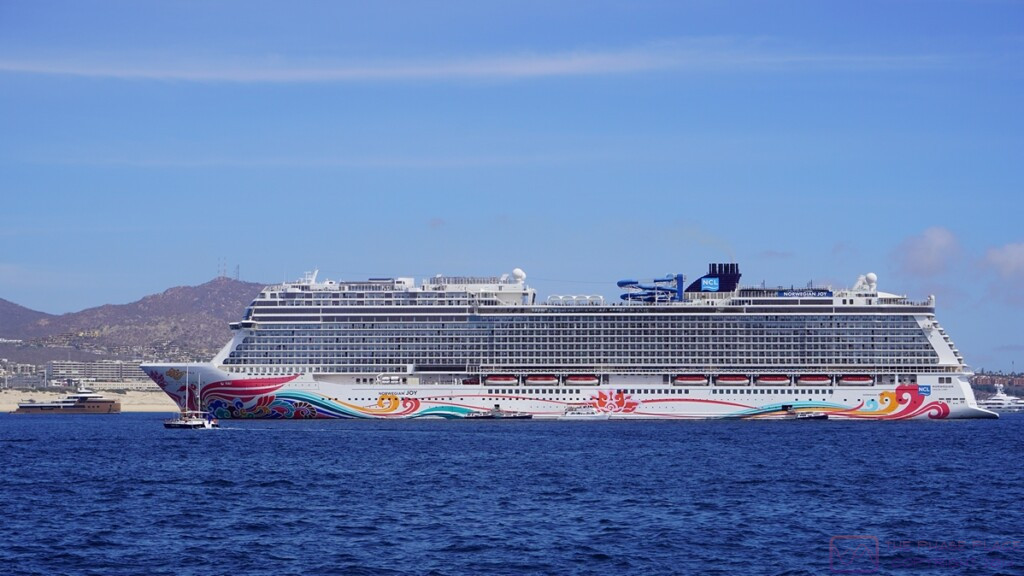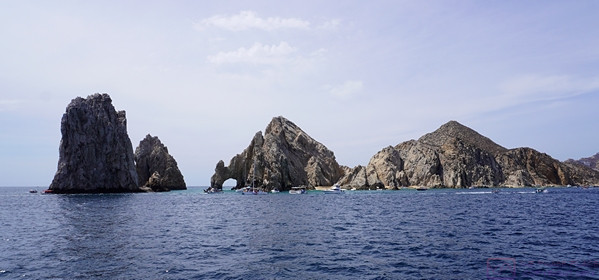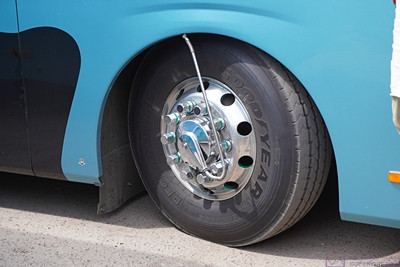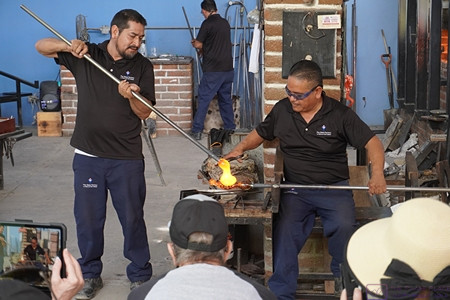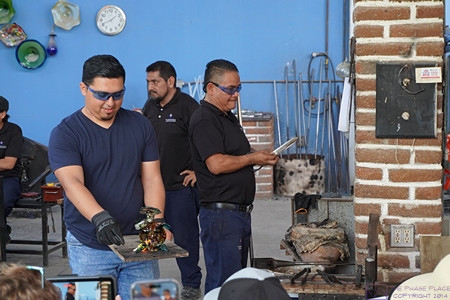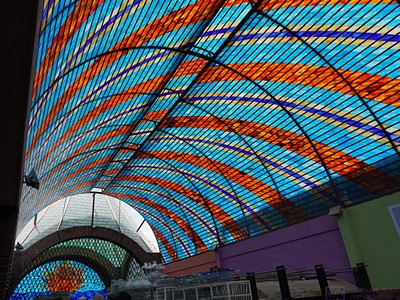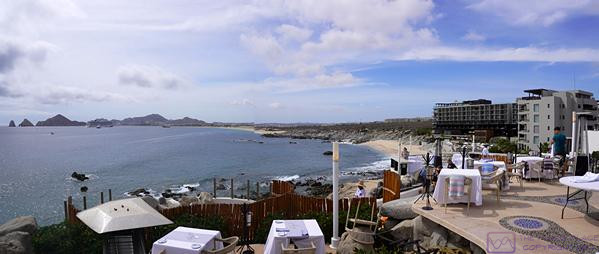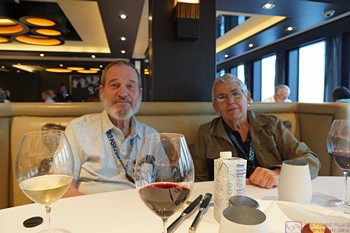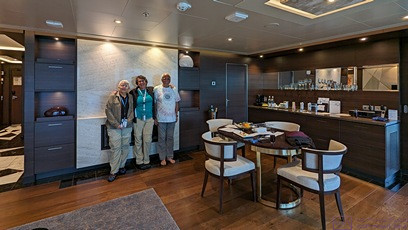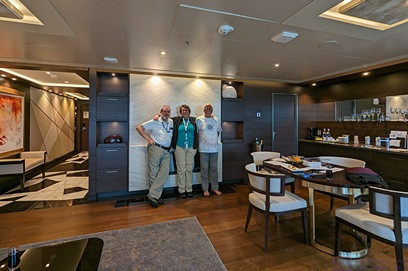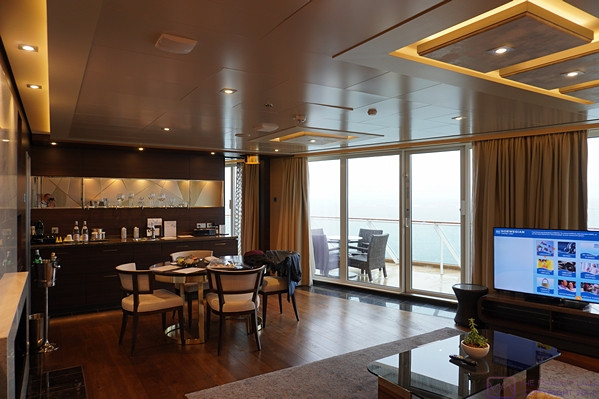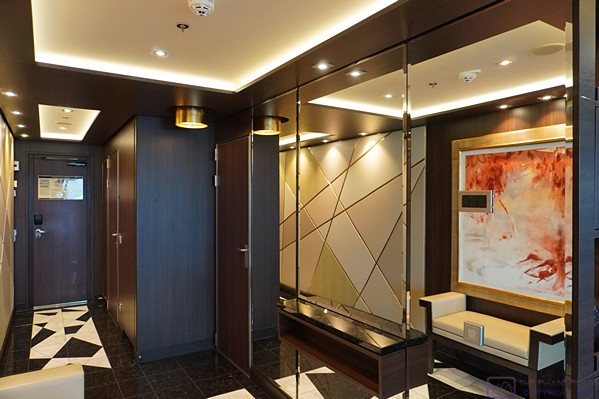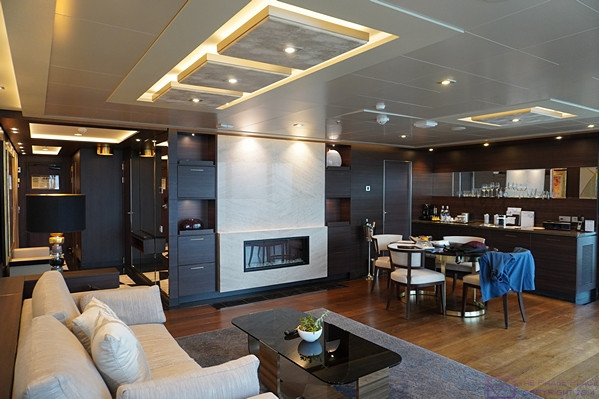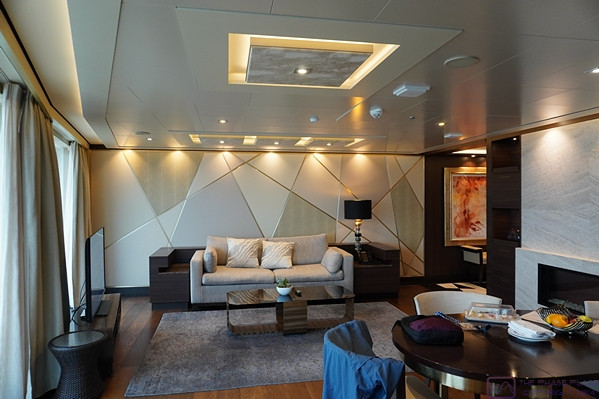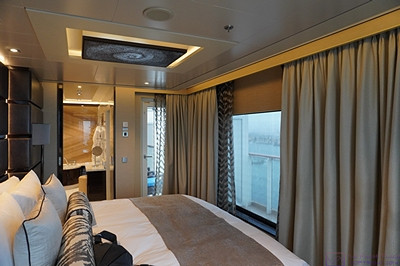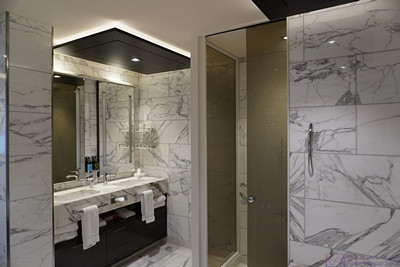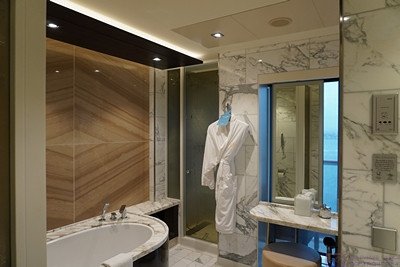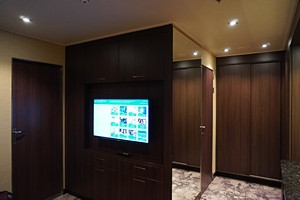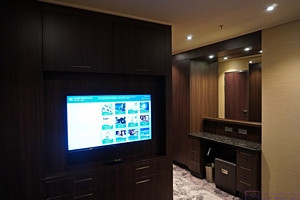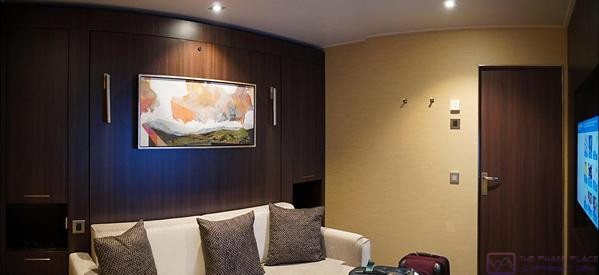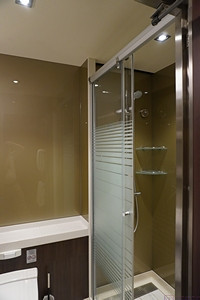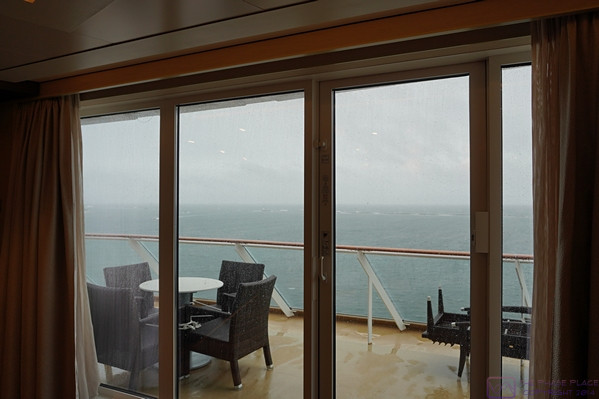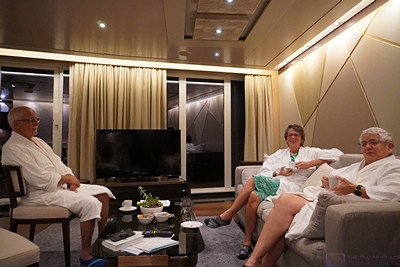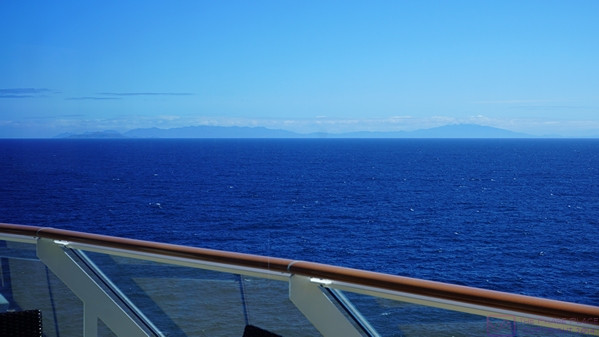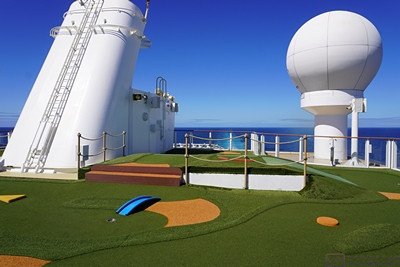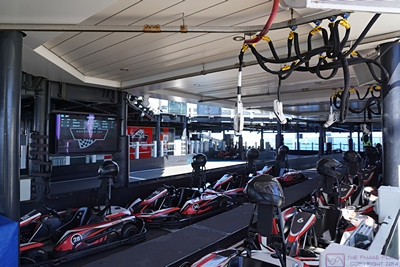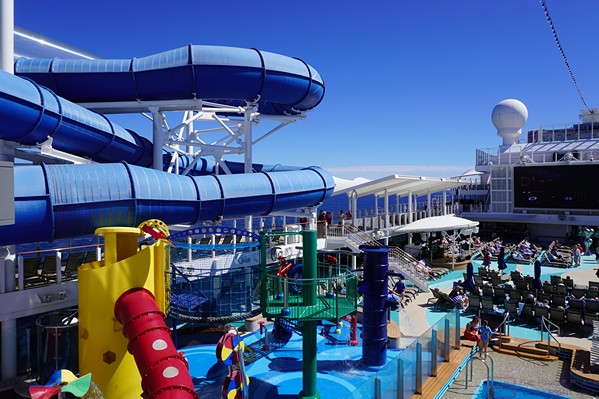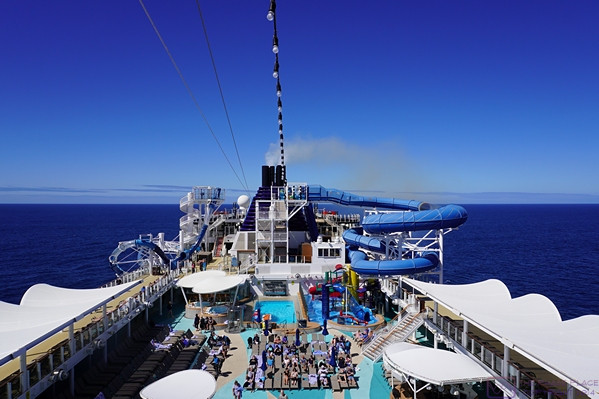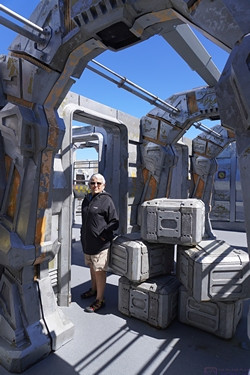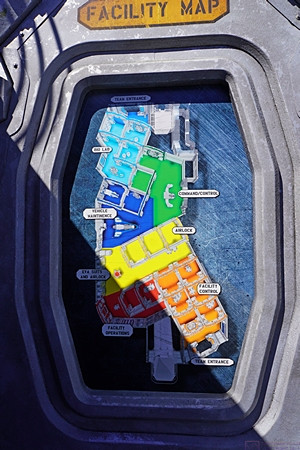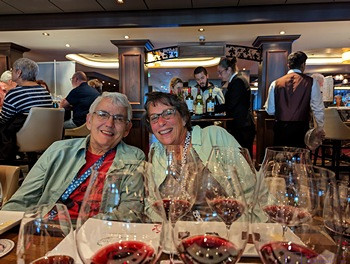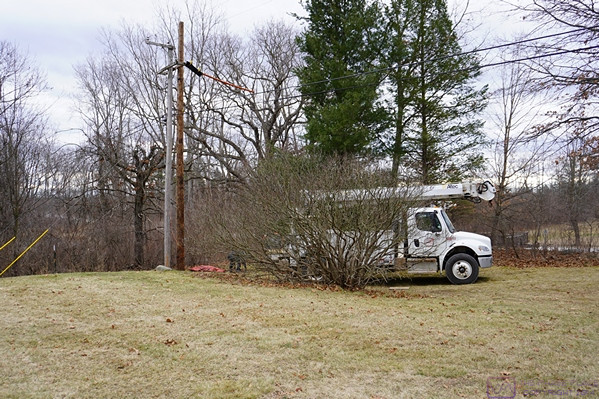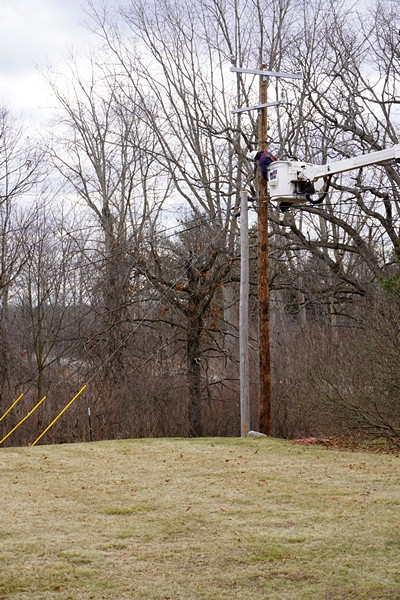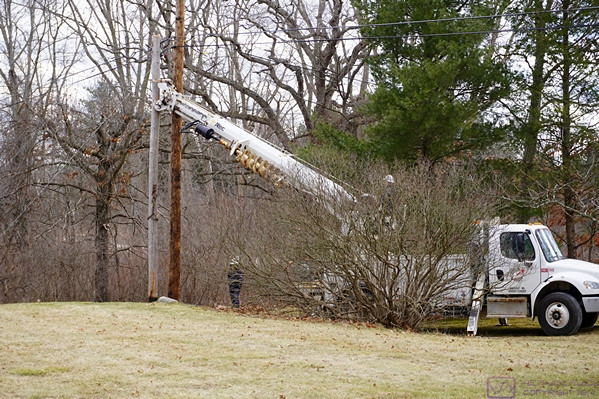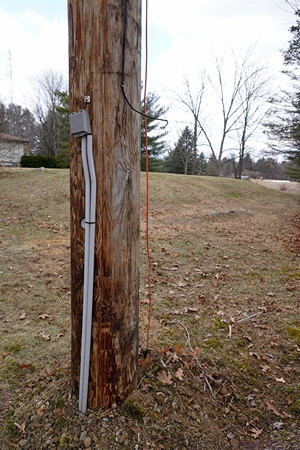SATURDAY 11 March – Arrival in Miami and Disembarkation
[ This post consists of some narrative and 18 photos with captions. ]
As our cruise was slowly drawing to a close, it would be an understatement to say that we had a great time. We were grateful that Nancy and Paul invited us along on this adventure, as it was not even on our event horizon. Had we decided at some point in the future to do this on our own, it would still have been a great trip, but getting to do it with close friends in one of the two “owner’s suites” of the NCL Joy HAVEN, was a unique (and probably once-in-a lifetime) experience for us. And it was a very special experience, indeed. Now where’s that lottery ticket?
We were up early to get ready to disembark and watch the ship come into the Port-of-Miami. The Haven staff had laid out a breakfast buffet in the Haven’s Horizon Lounge, so we made use of that first. The Lounge was mostly devoid of guests at this early hour, so following are photos of areas of the HAVEN that I have not previously posted.
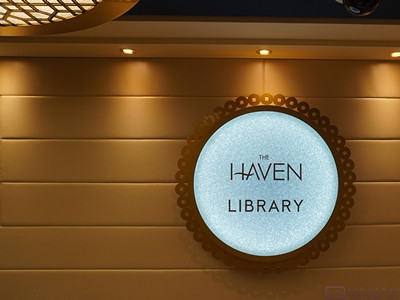
The sign for the HAVEN Library, in the hall just outside the main entrance doors. (We actually had a “back way” into the library as the emergency exit opened into the hallway right at the entrance door to our suite.) The Library is on the middle (18th) of the three HAVEN decks.
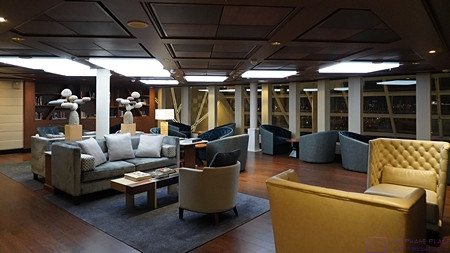
A partial view of the HAVEN Library from near the main entrance doors, looking forward to port. Our suite is just on the other side of the wall/bookcase at the left of the photo.
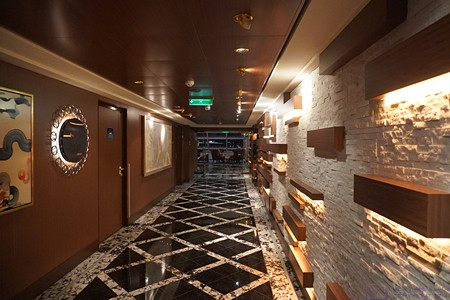
The hallway leading to the HAVEN Horizon Lounge. The Lounge is all the way forward on the lower (17th) of the three HAVEN decks. The center portion of the Lounge, however, has its ceiling at the top of deck 18. All of the staterooms are on decks 17 and 18. The Horizon Lounge, concierge desk, pool, and bar are on deck 17. Deck 18 includes the Library and the Restaurant. Deck 19 is indoor/outdoor lounging space.
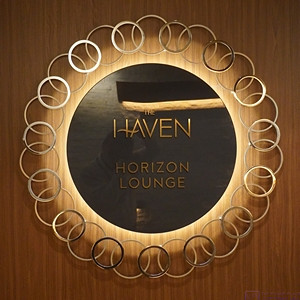
The entire NCL Joy is an attractive and well-maintained ship, but even the signage in the HAVEN had a special, understated elegance. (This photo also contains a selfie image of the photographer.)
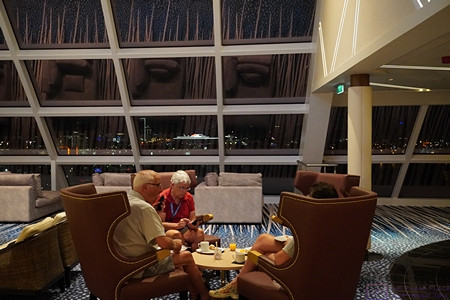
The other members of our little “gang” having a bite of breakfast in the HAVEN Horizon Lounge while I roam around taking photographs.
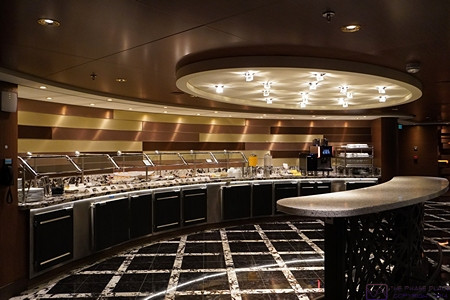
The buffet area of the HAVEN Horizon Lounge. We were there quite early (this photo was date/time stamped at 7:03 AM.)
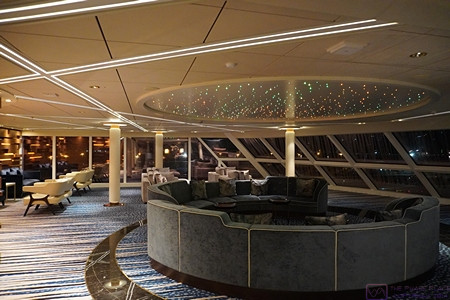
The port side of the HAVEN Horizon Lounge. The front portion of our suite, including the balcony, is above this ceiling but we never heard any noise from below when we were there.
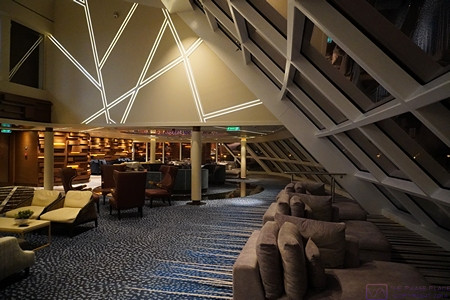
A wider view of the HAVEN Horizon Lounge from mid-ship front looking to port. The forward port corner of the library is visible in the upper left. The front portion of our suite, including the balcony, is behind the upper wall with the slanted lighting. To the right in the photo are the large forward-facing windows in the center of the Lounge which span both decks (17 and 18).
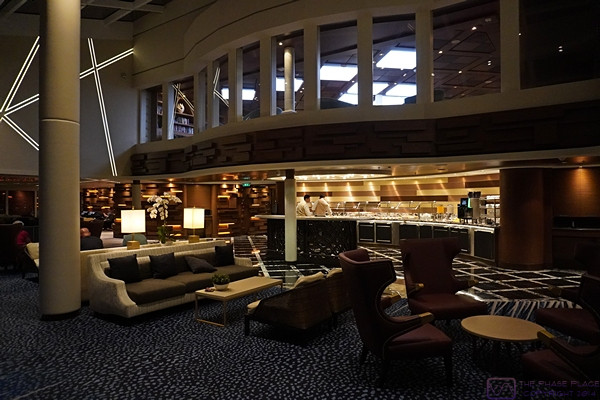
A view of the HAVEN Horizon Lounge and Library looking aft/starboard from slightly to port. The forward wall of the Library is also all windows, so from there you can see all the way forward through the large center Lounge windows. The wall with the lighting running at various angles is the other owner’s suite.
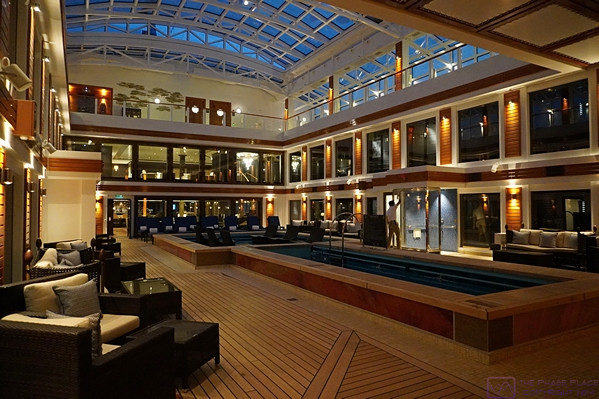
The HAVEN swimming pool and hot tub area. The area is open all the way to the ceiling of deck 19. The ceiling is retractable, but we never saw it opened during our cruise. The opening on deck 19 has lounge chairs all the way around. There is also access to the outside portion of deck 19 that is part of the HAVEN.
We arrived at the Port of Miami around 7 AM. Our departure from Los Angeles was in late afternoon light under heavy mist and rain, so we didn’t really see any of the California coast. With our approach to Miami, however, it was still dark and the sky was clear. From our first sighting of lights along the shore, it took several hours to actually get to the cruise ship terminal. While we might prefer national parks as places to visit and explore, there was no denying that the Miami skyline, lit up in the dark, is an impressive, urban sight.
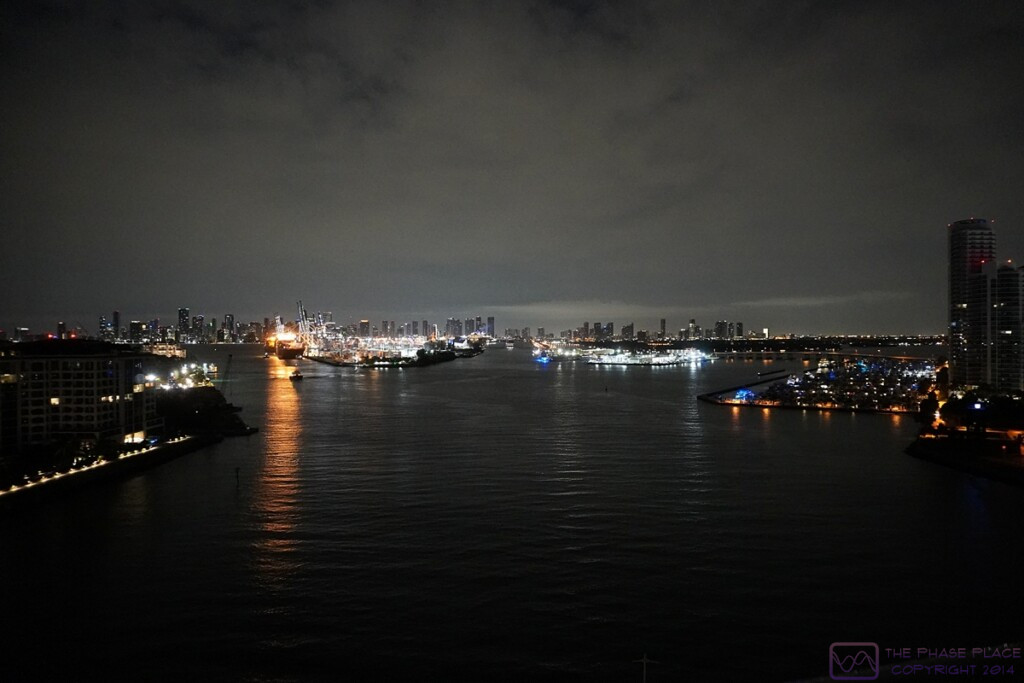
Coming into the Port-of-Miami under the cover of darkness. The cruise ship terminals are straight ahead. (Click for a higher resolution image on appropriate devices.)
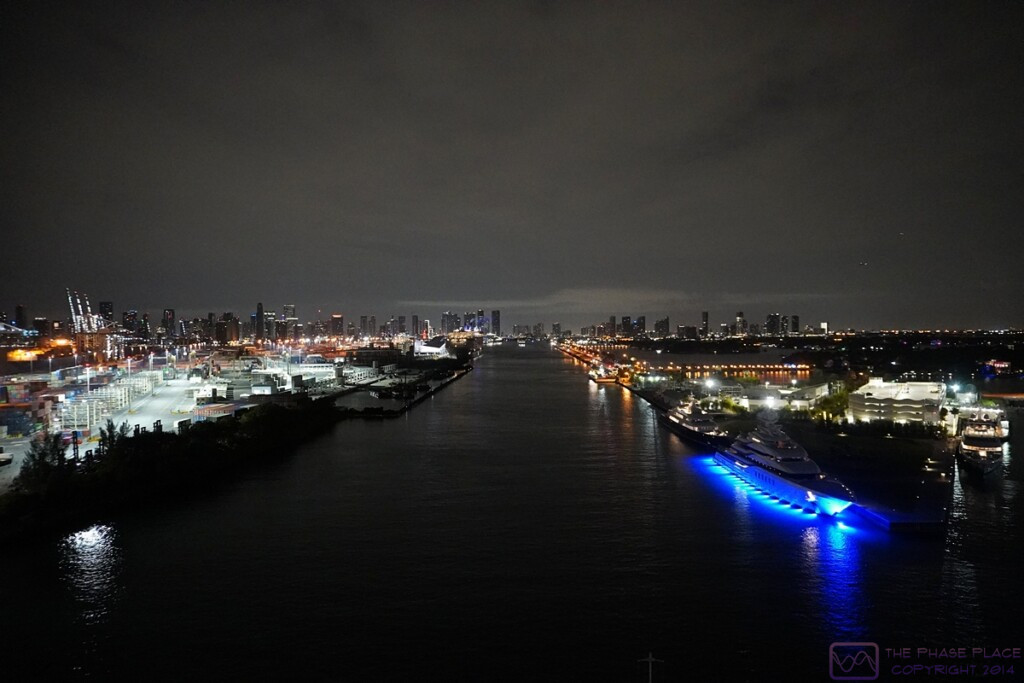
Heading towards the cruise ship terminals with the Miami skyline in the background; container dockyard on the left, superyachts docked on the right. (Click for a higher resolution image on appropriate devices.)
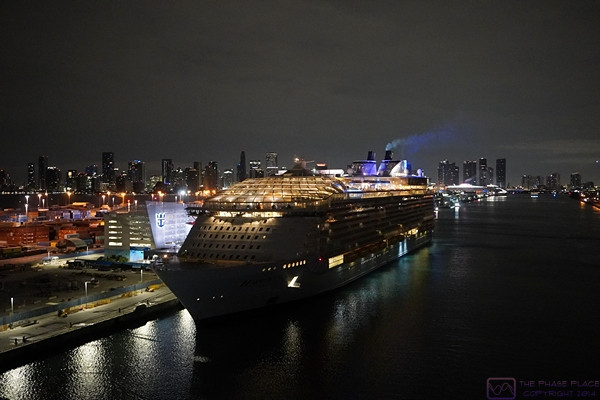
The Royal Caribbean Harmony of the Seas at its Miami terminal on the left. The Harmony of the Seas is even bigger than the NCL Joy.
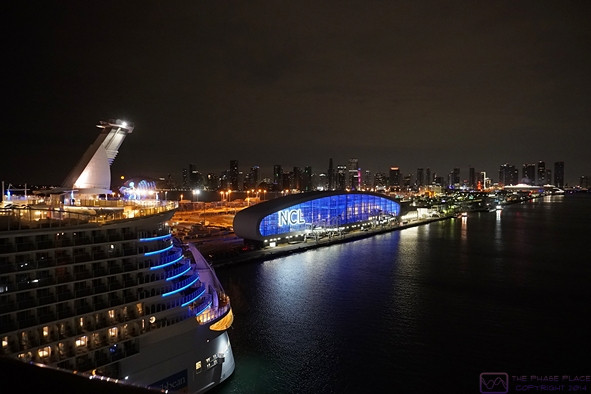
As we come alongside the RC Harmony of the Seas, the NCL cruise ship terminal comes into view on the left.
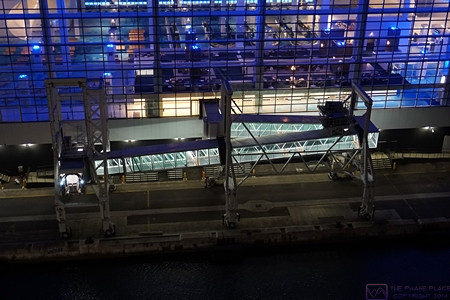
The NCL terminal is very modern. This photo shows one of the two enclosed gang planks. They are similar to the jetways used at airports. The whole structure moves parallel to the edge of the dock on rails and the opening for the ship can be adjusted (up and down) to match the boarding deck.
As soon as we began disembarkation things got busy and we did not take any more photos until we reached the Orlando area. The Norwegian Cruise Line terminal is a large, modern facility designed to make embarkation and disembarkation smooth and relatively easy. We elected to take our own luggage with us and had priority disembarkation as a result. (We each had an individual carry-on size rolling suitcase and each couple had a larger rolling suitcase that we checked when flying.) We cleared in through US Customs quickly and found our way to the taxi / ride-share area where we booked a larger Uber to get the four of us and our six suitcases to the car rental area at Miami International Airport where we had reserved a car with Enterprise Car Rental for the next leg of our journey.
The rental car area was a new/large terminal in itself, and picking up our rental car was a relatively smooth, painless process. We upgraded the size of vehicle at the counter for a small extra charge. We also verified that we could use the toll roads. The toll road system uses “toll-by-plate” and the tolls would be billed to Enterprise and passed along to us. We were on our way by 9 AM and headed north on the Florida’s Turnpike towards Orland. Our first destination was the boarding facility near Walt Disney World to retrieve Nancy and Paul’s mini-Goldendoodle, Bella, who was boarded there for the duration of the cruise. (It was an amazingly nice boarding facility with a great staff, so Bella was in good hands while her servants were away on holiday. She even had her own private “suite” with access to an outside area. Sometimes “a dog’s life” is a pretty good life. )
With Bella in hand, we headed southwest on I-4 towards Lakeland, a route with which we were all too familiar. Traffic on I-4 was as bad as usual, but eventually loosened up. Soon enough, we were exiting for Polk City. We arrived at Mount Olive Shores North (MOSN), where Paul and Nancy have a lot with a pad for their Class A American Eagle motorhome, a short time later.
Even through I wasn’t feeling well, we decided to go to Ford’s Garage in Lakeland for dinner. Bella was with us, so needed their outside seating as dogs are allowed there. We abandoned that idea shortly we arrived as the wait was going to be at least an hour. We considered other dinner options, but ultimately decided to return to MOSN and pickup some pizzas in Polk City on the way. We had a flight booked for the next morning from Tampa International Airport to Detroit Metropolitan Airport (DTW), and spent the night in Paul and Nancy’s motorhome.
SUNDAY 12 March – Closing the Loop
We were up early in order to be ready to go and skipped breakfast. We said our “farewells until next time,” and “thanks yous,” “and left MOSN around 8 AM for the approximately 1-hour drive to Tampa International Airport. This early on a Sunday morning the traffic wasn’t too bad, and returning the rental care was quick and easy. Our flight home on DELTA Airlines was schedule to depart at noon, so we found some seats near our gate, got some coffee and bagels/muffins, and doodled on our iPads will we waited.
Our incoming flight was delayed so we waited a bit longer, but it was no big deal for us. A couple sitting nearby was a bit anxious, however, and we struck up a conversation. They were headed to Amsterdam (Netherlands) via a connecting flight out of Detroit Metro Airport. Their window to get off of our flight onto their next one was already uncomfortably small, but I think we made it out of Tampa International Airport in time for them to make the connection in Detroit.
Our daughter was tracking our flight, and drove to DTW to pick us up and take us back to her house, where we left our F-150 while we were gone. Back at her house, we transferred all of our luggage into our truck, ready to return to our house. The truck started just fine, but displayed a warning message about the charging system, and the battery light stayed on. Linda Googled the message and found that it was likely that our battery was not charging and our range might be limited a 20- to 30-minute drive. Knowing that, we thought we might make it home, and started on our way. We didn’t get very far, however, before deciding that this was not a good idea, especially later on a Sunday afternoon, whereupon we turned around and returned to our daughter’s house. She was happy to let us borrow her car to get home and we promised to return it in a day or so. It was not the conclusion to our epic adventure that we envisioned, and the problem was resolved over the next few days, but that’s another story for another post.
…
